Piecing together fragments of her experience – a word or phrase from a conversation, the texture of a particular piece of fabric – textile artist Hannah Lamb is constantly inspired by the everyday, as well as the rich textile heritage of the Yorkshire landscape where she lives and works.
Whether consciously or not, these influences are woven together, often using scraps of vintage fabric combined with a diverse range of techniques, to create a sense of place and her response to it.
Hannah is very much led by her emotional response to the world around her. She reveals that over time she’s learnt to trust and explore this, creating work that’s meaningful to her, rather than focusing on what might sell.
And her life as an artist is anything but isolated. Whether she is bouncing ideas off friends and family or collaborating with other artists, she has come to realise that connecting with others lights the sparks of inspiration and pushes her to create work with meaning. She reveals the joy of interacting with her audience who can become participants in the work itself, as they share their own stories and experience of the textiles they are wearing.
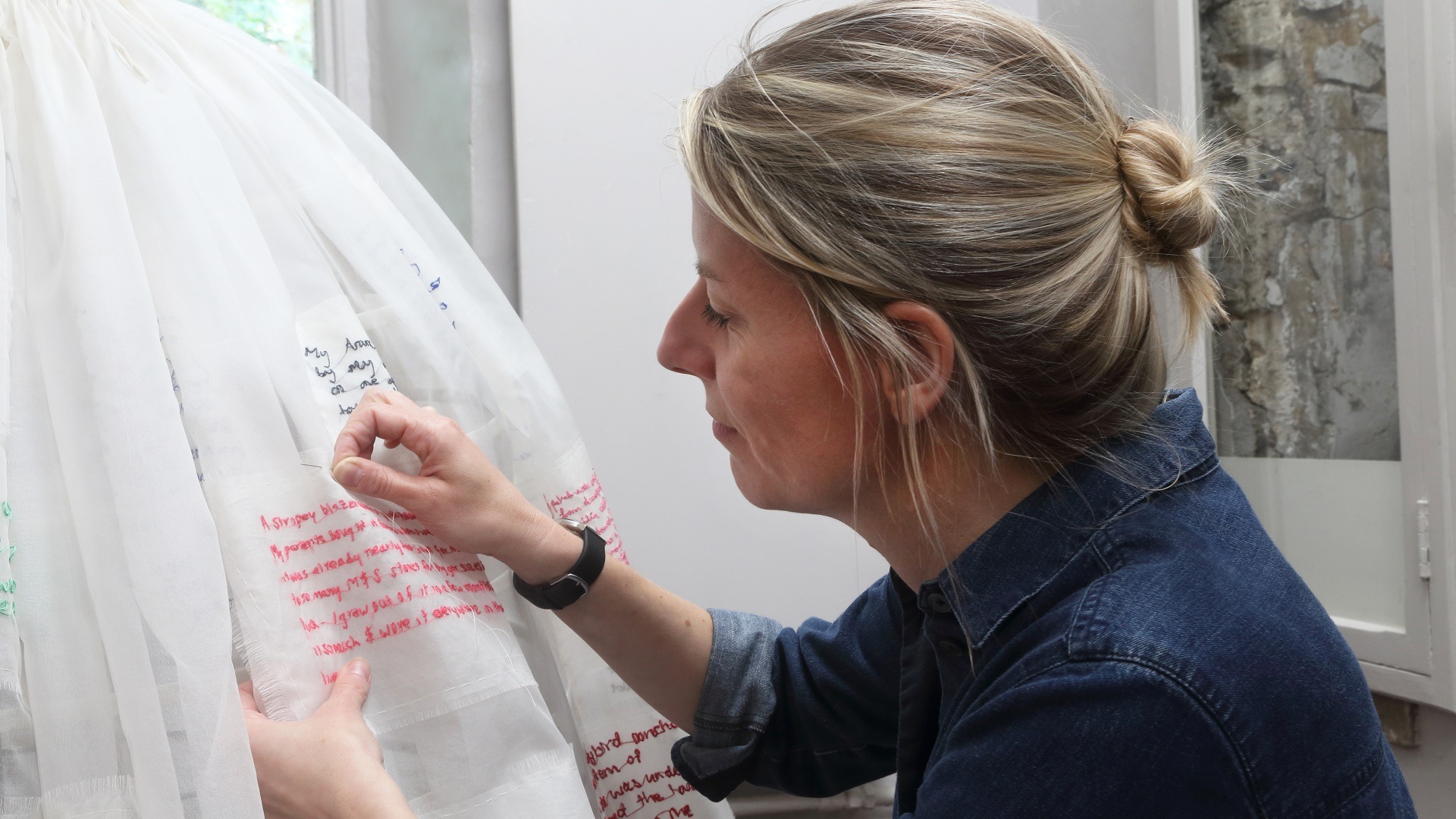
Hannah Lamb: My work endeavours to capture my experiences of places in a highly personal manner: through touch, making and material. My artwork becomes something about place and my place in the world, a kind of gentle presence. The work can take all kinds of forms: small 2D works, installations, and assemblages.
I am inspired by almost everything. It might be the textures and patterns of the pavement, the light as it hits the roof, a conversation I have with my student, a piece of old fabric, a science programme on TV. I take things on board consciously and subconsciously and at some point, some aspect of these things may find its way through and become useful. Although it has changed over time, my practice always seems to find its way back to things that matter. It is often hard to define those things but they seem to centre on a highly personal experience of the material world and an awareness of surface and detail.
My work has developed in a number of ways, mainly in terms of a freedom to express my ideas in any way I choose. I don’t feel restricted by any specific media or process and I feel I can use any format that I want. I hope there will always be a certain indescribable ‘essence’ in my work, which makes it my own.
For me, art is about working things out. Working out who you are, where you are and what your relationship is with people, environments and things.
Exploring a sense of place
I have a strong interest in textile heritage. This has been a life-long interest, strengthened by my time living in West Yorkshire, an area steeped in the heritage of textile production. The landscape is punctuated by former textile mill buildings and chimneys and there are some incredible textile collections in the area. I’ve also been very fortunate to visit a few local firms, to see the amazing processes and stories behind cloth.
Alongside my fascination with historical textiles, I’m also interested in the present day stories textiles can tell. Textiles are present in every part of our lives and so we tend to have very close relationships with clothing and cloth. I speak to a lot of people who have fond memories, or for whom an item of clothing has symbolised an important moment in their life.
These ideas fed into my project Fragment of a Dress (2022) for the Brontë Parsonage Museum.
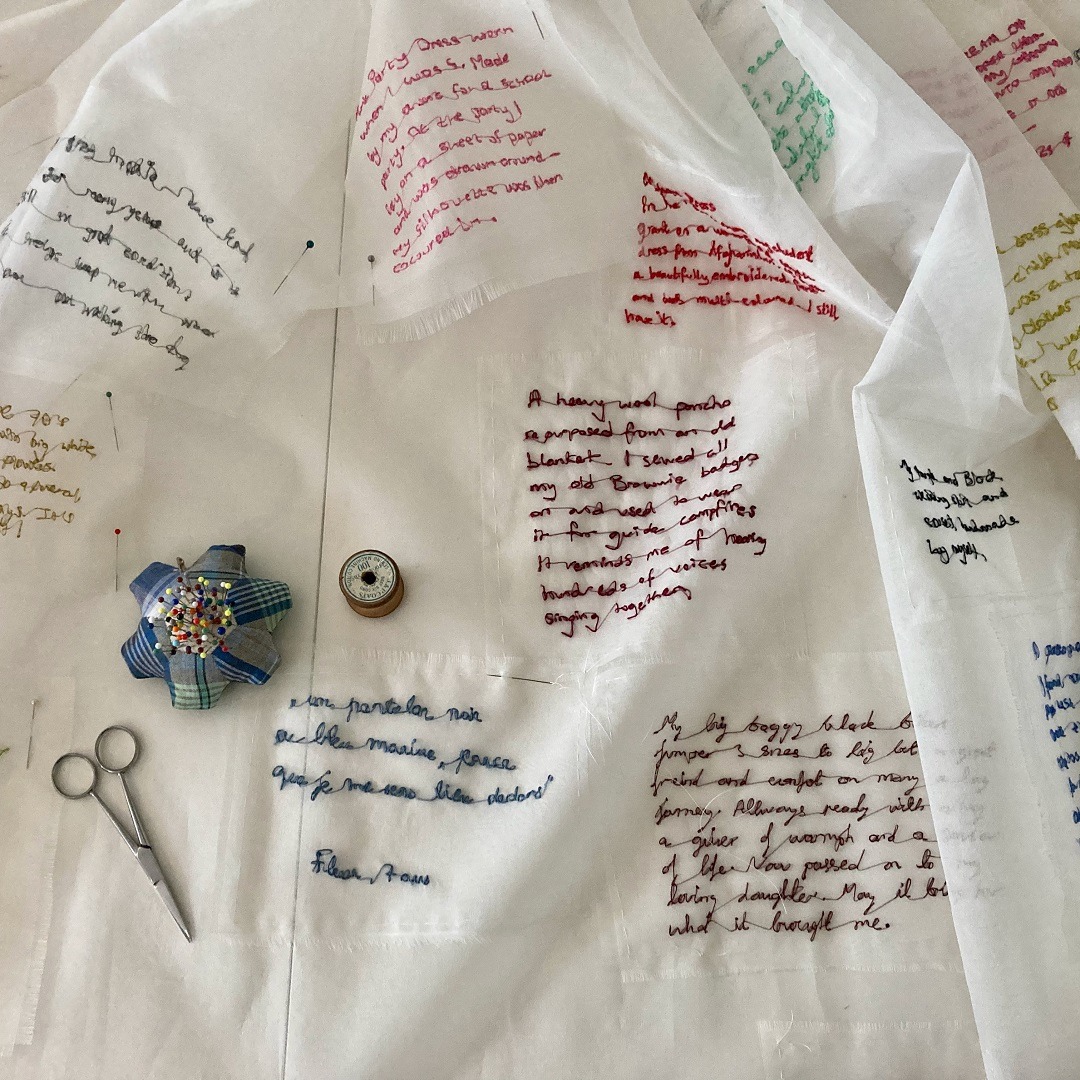
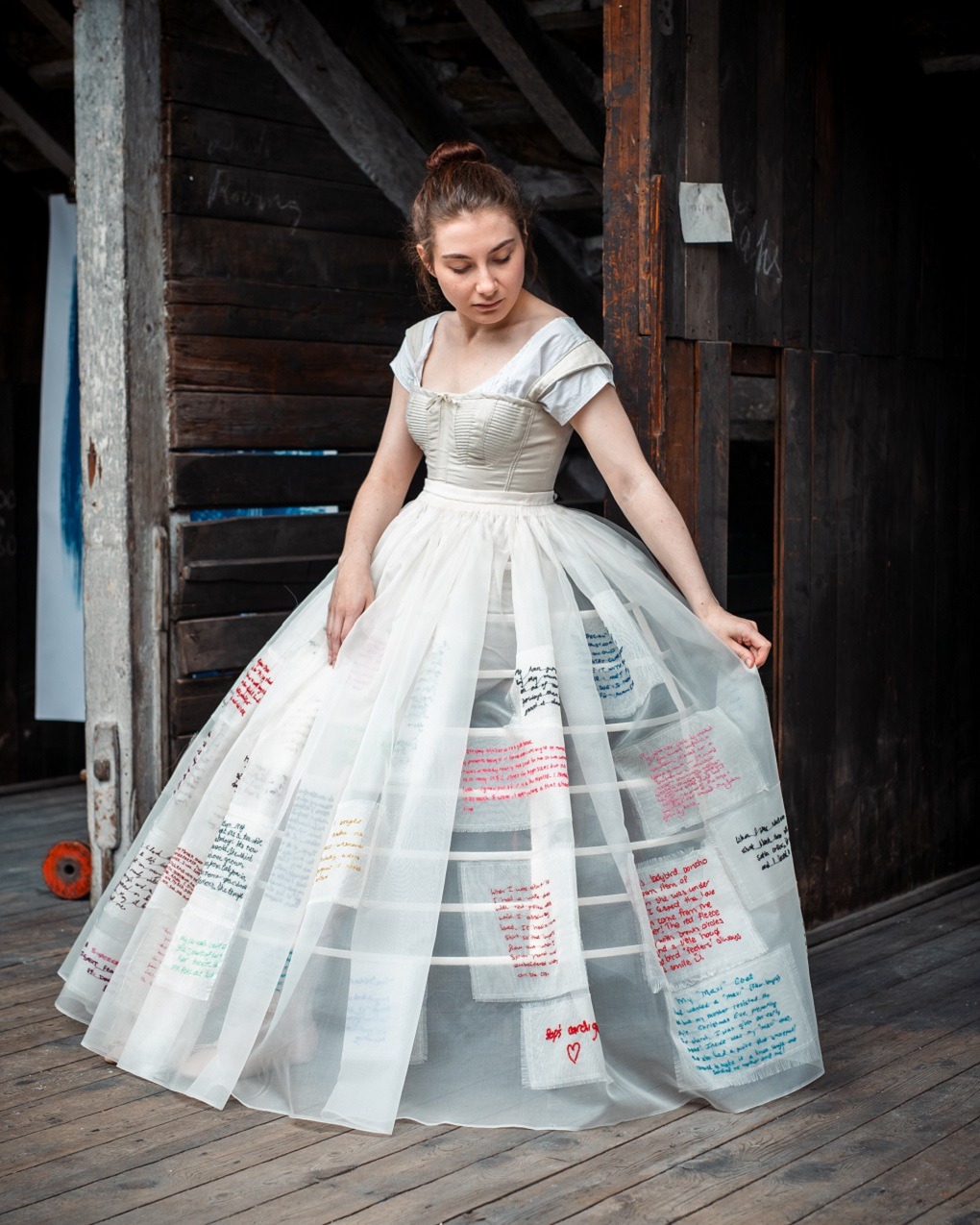
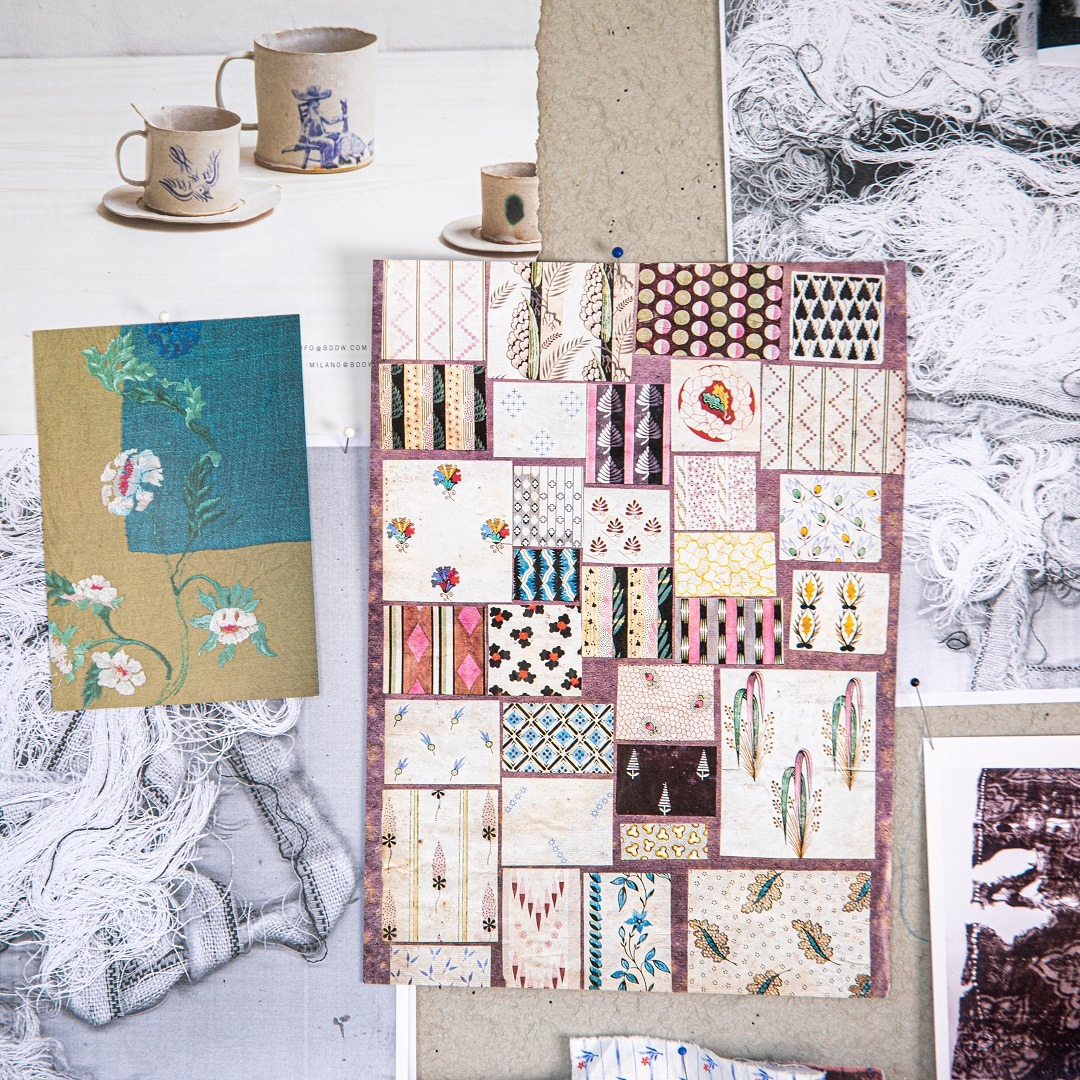
A process of enquiry
Every project is completely different. I don’t have just one technique or material I work with, so I don’t have any specific working method. I use whatever media or process seems appropriate to the work: silk, paper, wool, hand stitch, wax, photography, found objects and more. All of that said, there are some common elements to the progression of my work.
Whether I’ve been given a set brief, or I’m developing a more personal direction, I’ll usually start with a combination of brainstorming and some kind of background research. My research might take place in a museum or archive, on location (for site-specific work) or using books and online sources such as digital catalogues.
I don’t do much primary drawing but I sketch to work out how to do things. I also write lots of notes; ideas that come to mind, notes from journals, books and lectures, observations and reminders. Sometimes my journal becomes a place to document the evolution of ideas, in case I need to turn back and retrace my steps.
During the initial ideas process, I’ll often make use of my pinboard in the studio to bring visual ideas together. I pin up postcards, photos, sketches and materials. This helps me to see connections between things that I might not have spotted otherwise. It’s also a useful visual reminder of what I’m working on, which is handy as my studio time can be sporadic.
In the early stages of a project, I might have a number of different ideas, and I think it’s healthy to explore a variety of paths before settling on what you want to create.
This will often involve talking ideas through with friends, family or colleagues. There’s something about verbalising my thoughts that helps me make sense of them and gives me the confidence to try new things.
Once I’ve decided what I’m going to make, I’ll often do some kind of textile sampling or testing to try the idea out on a smaller scale and with a variety of materials. This helps me to refine my processes and encourages me to take risks.
In terms of making a final piece, over the years I’ve found myself working on a larger scale. I think this is partly a result of having access to bigger spaces to make work but also as a response to the places I’ve exhibited. The vast interiors of former textile mills lend themselves particularly well to textile art on a grand scale.
The magic of collaboration
Projects I’ve done involving other people are particularly special. In 2016 I created a project with my friend Claire Wellesley-Smith called ‘Lasting Impressions’. The work was commissioned as part of the Saltaire Arts Trail and we were given the fabulous opportunity to work in the attic space of Salts Mill. The Spinning Room was once the longest in the world at 123m (405ft). It’s a vast and magical space with beautiful natural daylight and a strange quality that feels somewhere between a cathedral and the deck of a ship.
Claire and I created a project that would engage visitors in thinking about textiles we wear and use every day. We asked visitors to create an impression of an item of clothing they were wearing on a piece of soft porcelain clay. We also asked them to note down where the item came from, what it was made of and what they liked about it. It created a fascinating archive of cloth and clothing – a kind of time capsule for our attitudes to materials and consumption of textiles. We completed a follow-up the year after that explored materials in more depth.
It was great to work with Claire, as well as with a few wonderful volunteers. It was my first time collaborating on a project and I found it a really stimulating process. I also enjoyed the dialogue with the audience/participants and these factors have encouraged me to bring other people into my projects much more.
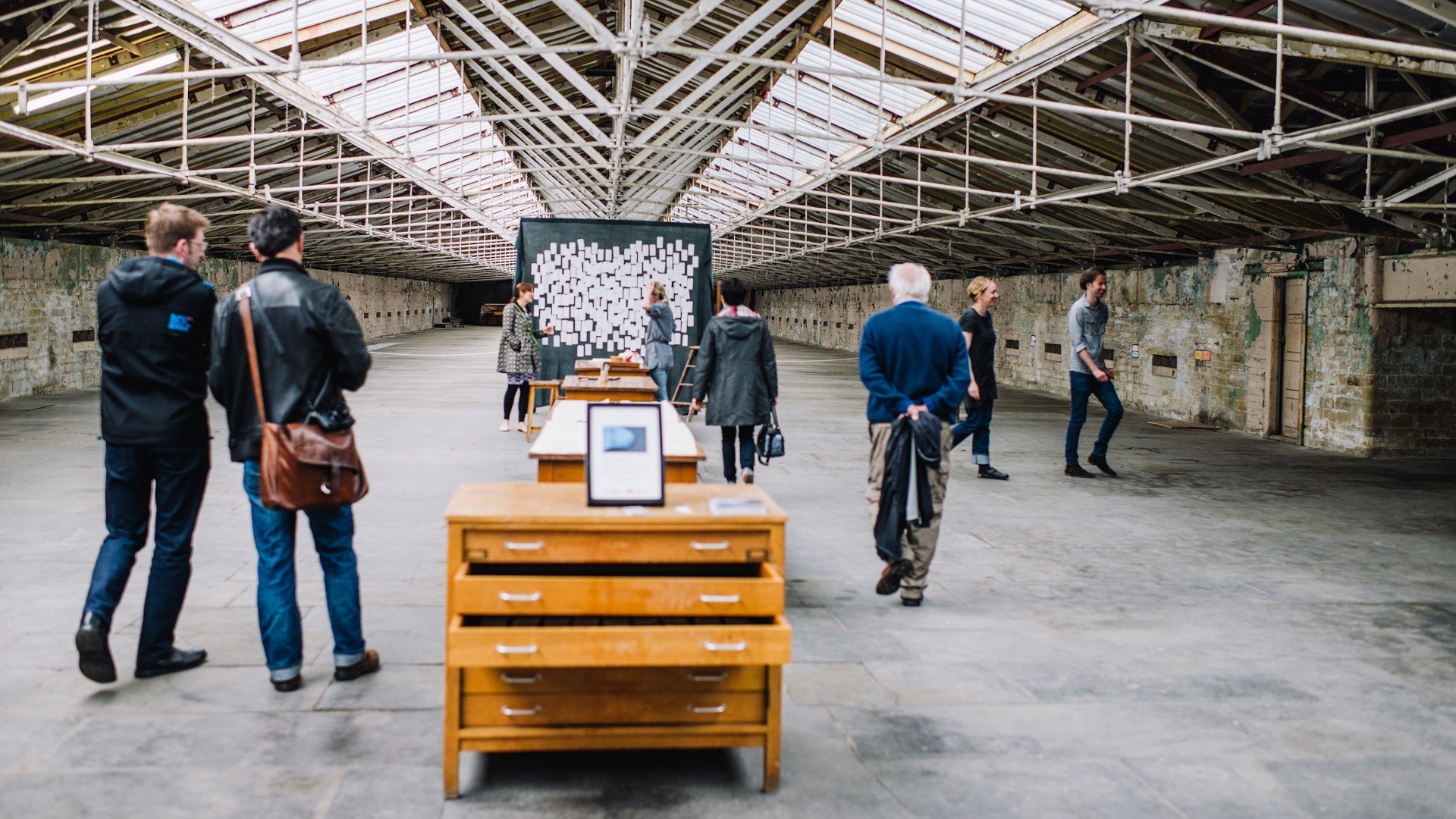
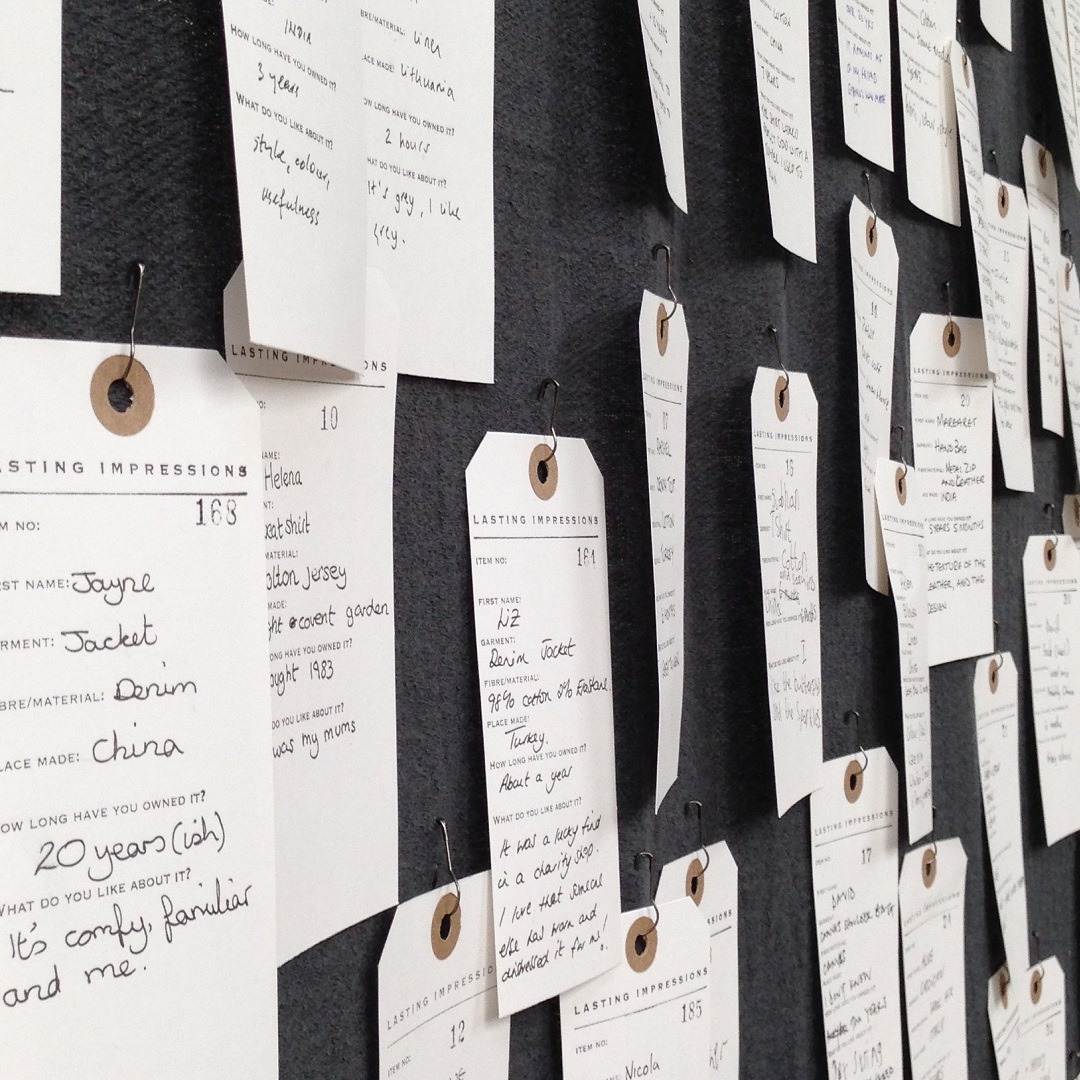
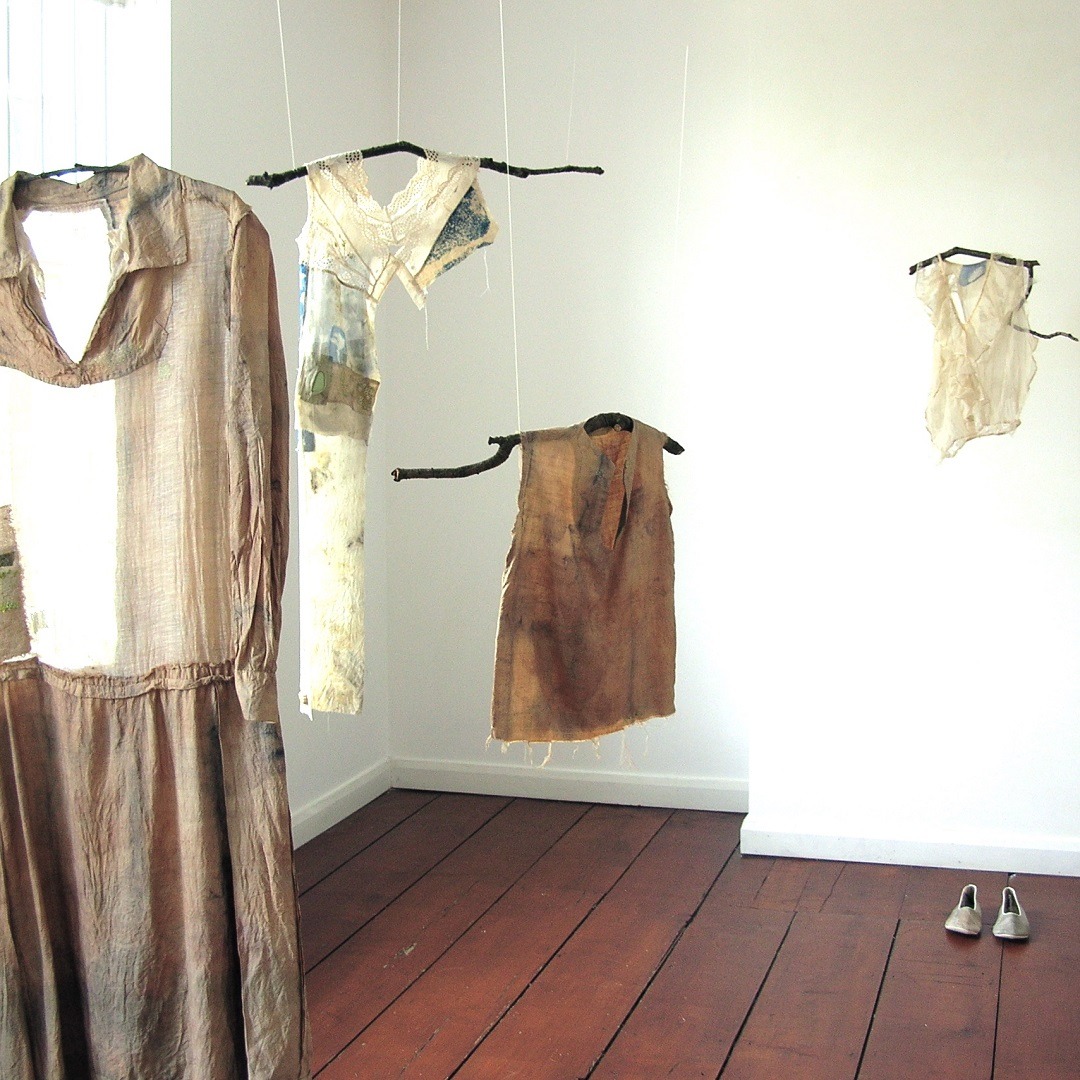
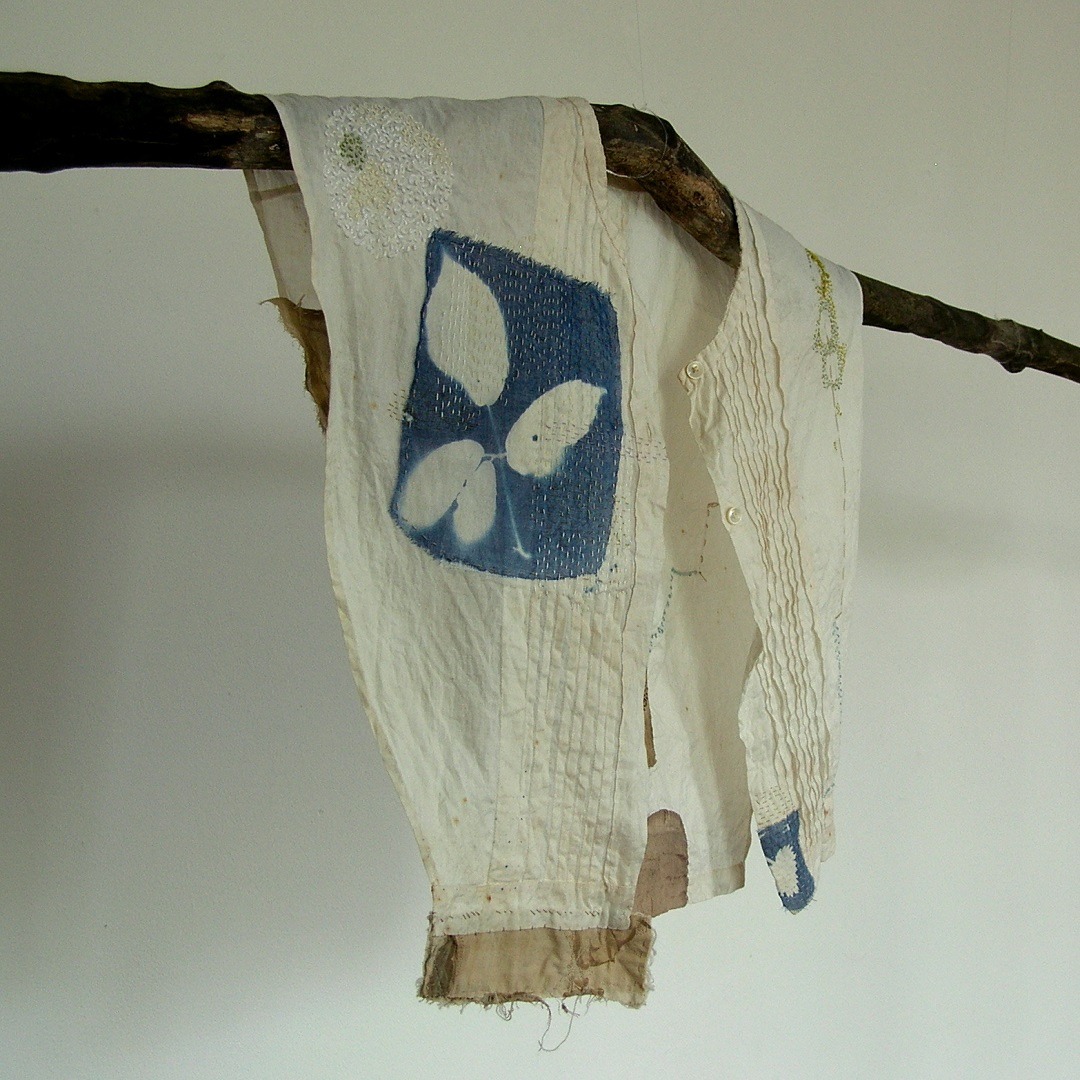
Learning from other artists
When I started out I felt quite isolated in my practice. Being a visual artist is often considered quite solitary work but it doesn’t have to be. Being part of a shared studio can help you feel more connected. I would also encourage aspiring artists to look for exhibiting groups or artist networking opportunities in their local area.
I’ve been a member of the 62 Group since 2013 and was absolutely bowled over to be accepted into the group. Just being accepted was a huge achievement for me and helped to validate my practice.
I became a committee member quite early on, which has helped me connect with other members and develop my professional practice. The group is run on a cooperative basis, with all members expected to help with the running of the group. I think it’s very much a case of ‘you get out what you put in’.
I have learnt so much from working with galleries, exhibition hanging, helping on selection panels and even seemingly mundane tasks like packing and unpacking work. You get to see how other artists tackle things, both in terms of creative and practical challenges.
The other aspect I find helpful about being in the group is the ‘three strikes rule’. The group has a strict rule that every exhibition is selected, so it’s never a guarantee that your work will be shown. If you don’t submit work or it’s not selected three times in a row, you forfeit your membership. Just knowing this is enough to keep me on my toes.
It’s been a huge privilege to share experiences with long-standing members as well as exciting new artists. I often have to pinch myself that I get to exhibit with such a creative and prestigious group.
![Hannah Lamb, [De]Constructed Cloth, 2019. 300cm x 160cm x 50cm (10ft x 5¼ft x 20"). Cyanotype, devoré, digital print, stitch and appliqué. Mixed fibre fabric, threads, mirror, vintage bobbin.](https://www.textileartist.org/wp-content/uploads/DSC_0119-Hannah-Llewellyn.jpg)
![Hannah Lamb, [De]Constructed Cloth (detail), 2019. 300cm x 160cm x 50cm (10ft x 5¼ft x 20"). Cyanotype, devoré, digital print, stitch and appliqué. Mixed fibre fabric, threads, mirror, vintage bobbin.](https://www.textileartist.org/wp-content/uploads/DSC_0053-Hannah-Llewellyn.jpg)
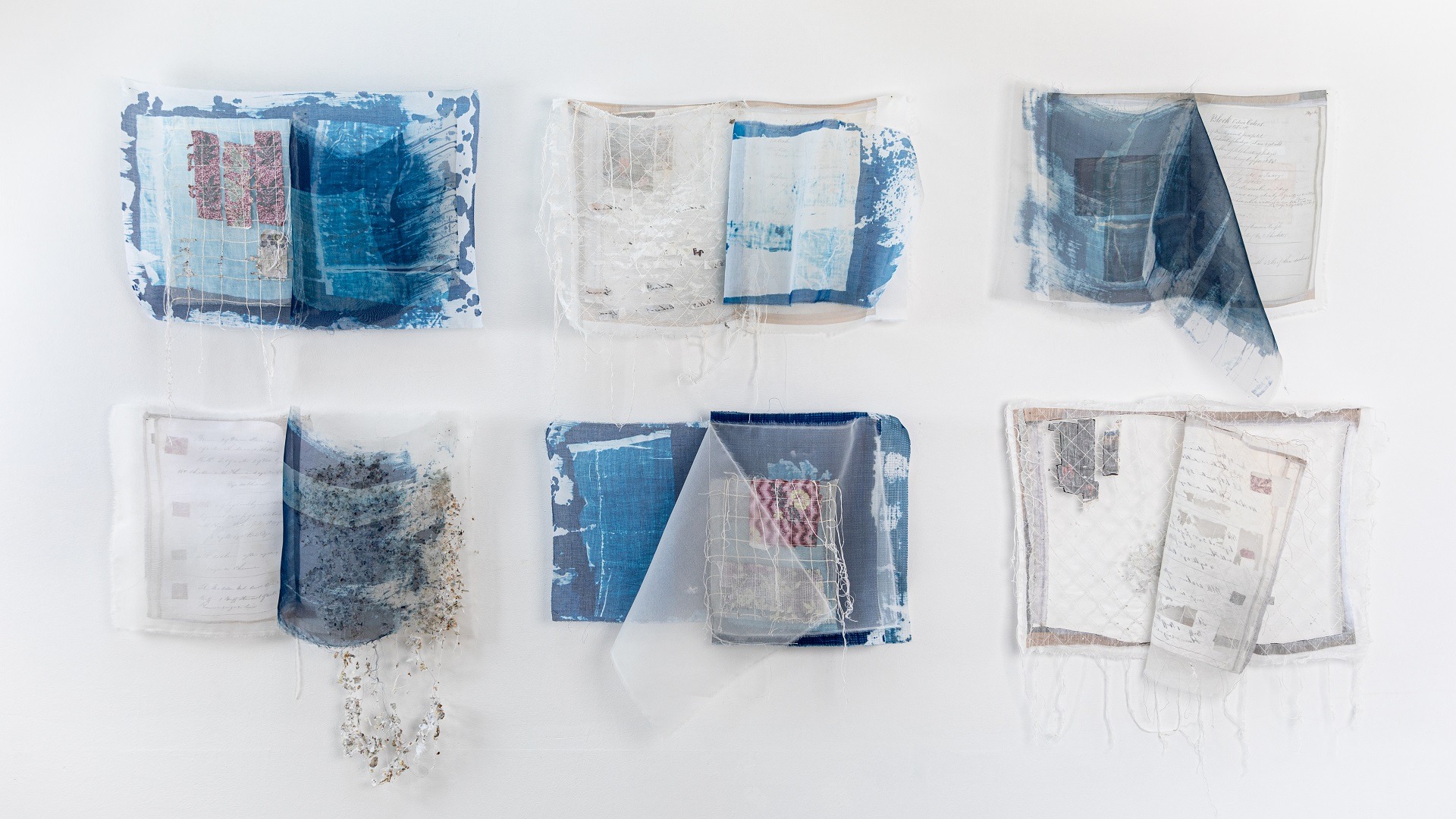
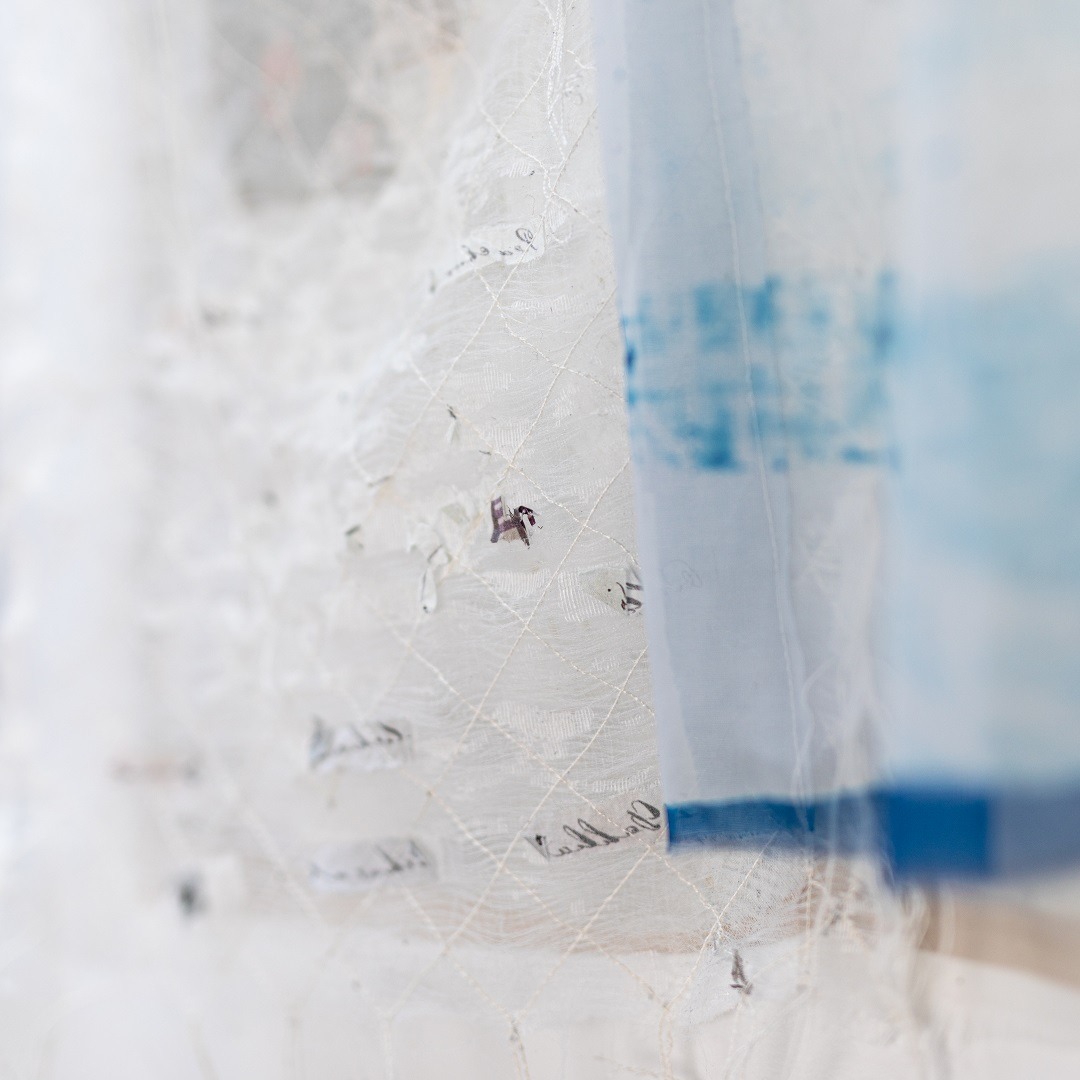
Feel the fear and go for it
An ongoing challenge for me is self-belief. It can be hugely disheartening when I’m knocked back with applications and exhibitions but it’s important to know that every artist has to deal with rejection. I have no magic wand to fix this, but I suppose the adage ‘feel the fear and do it anyway’ is probably as good as any.
When I’m feeling stuck or overwhelmed I draw on strategies already mentioned such as using a pinboard and chatting ideas through with friends and family. Another helpful tip I find is to leave some work undone at the end of the day. This is particularly important for me as my studio time is often fragmented.
Often my compulsion will be to try to finish something off, but in fact, leaving my work with a little bit left to do helps prevent procrastination. I try to leave something out on my desk to finish. That way, next time I walk in the studio I can pick up where I left off straight away, without having to think what to do. I find this buys me some time for thinking as I complete this task so that I can settle in and consider my next steps.
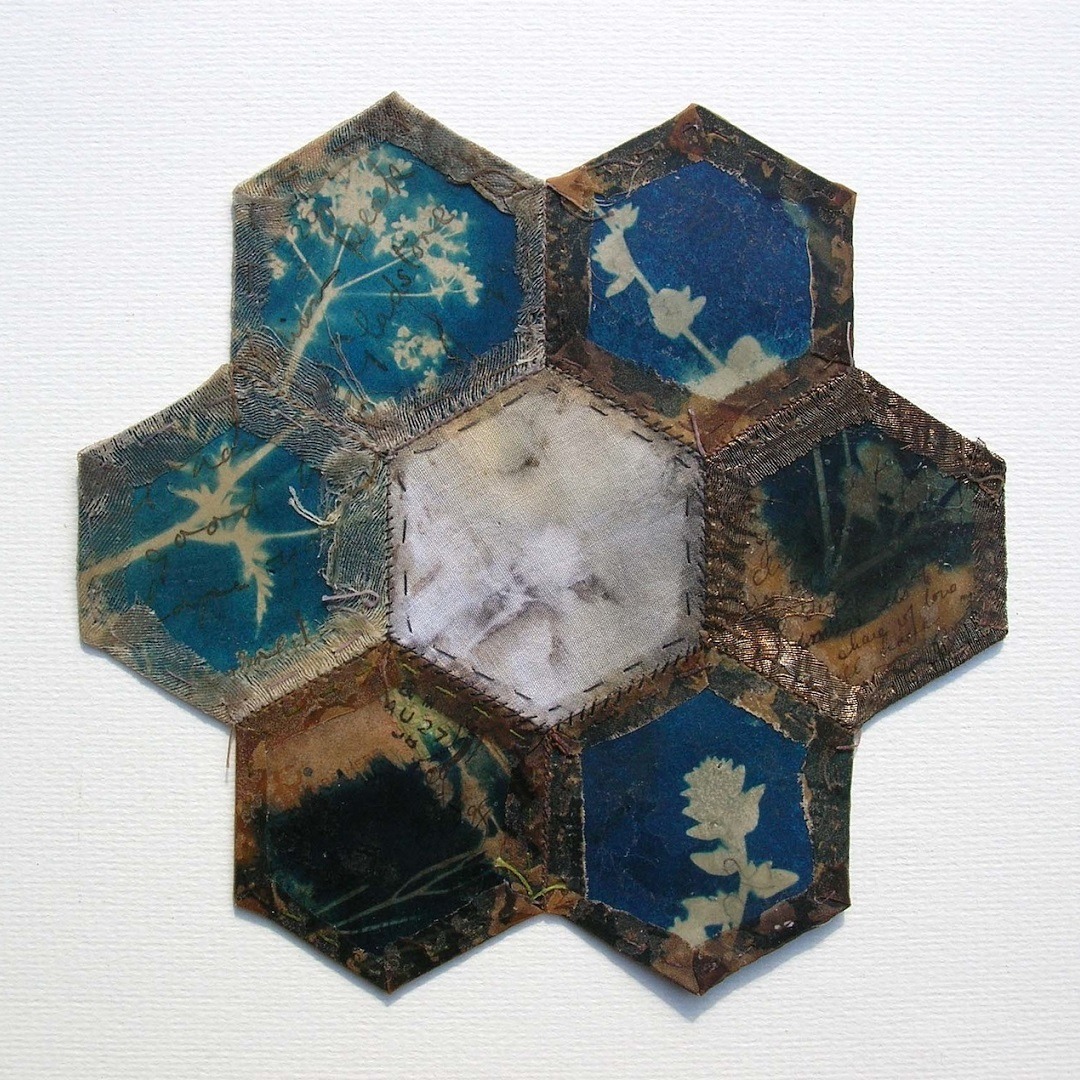
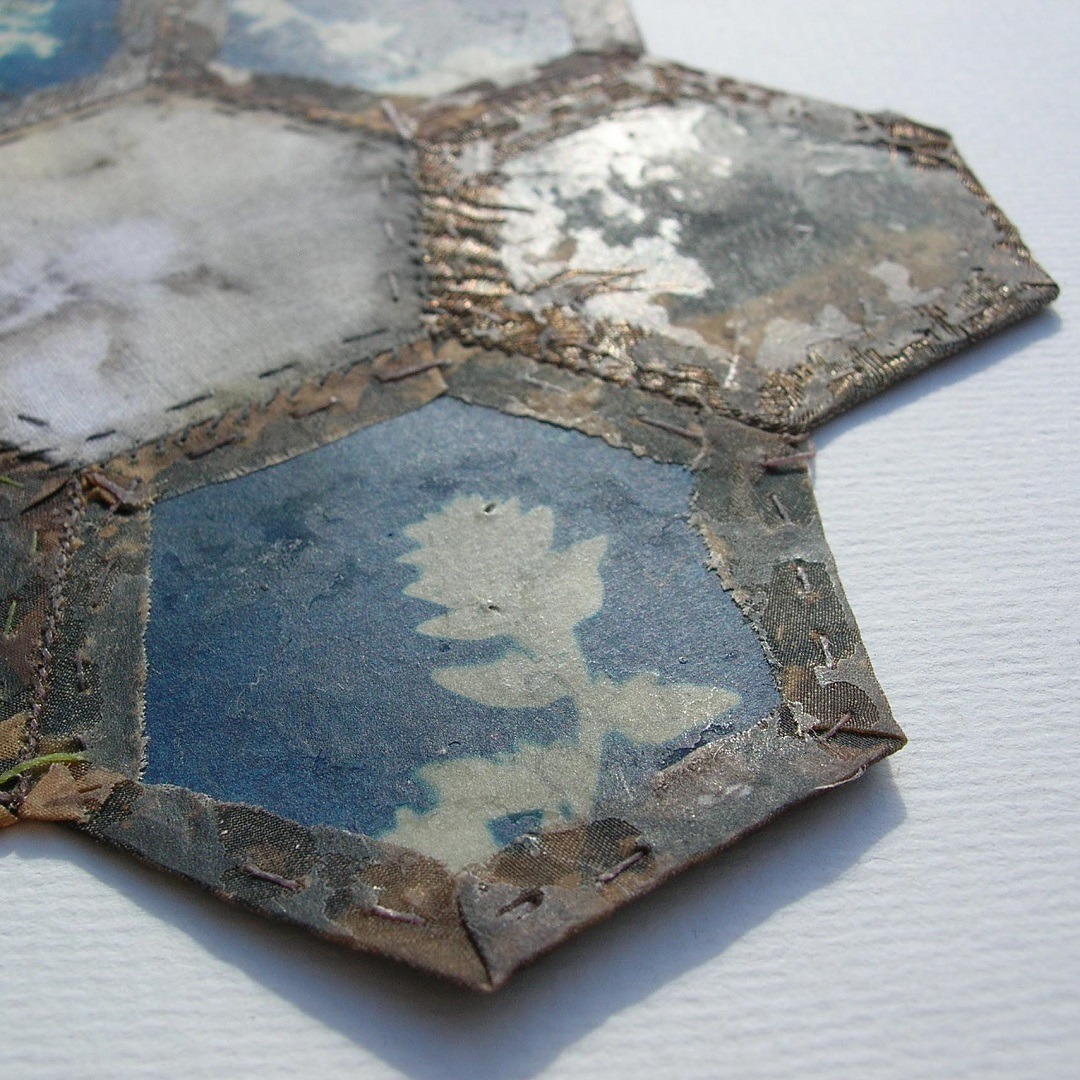
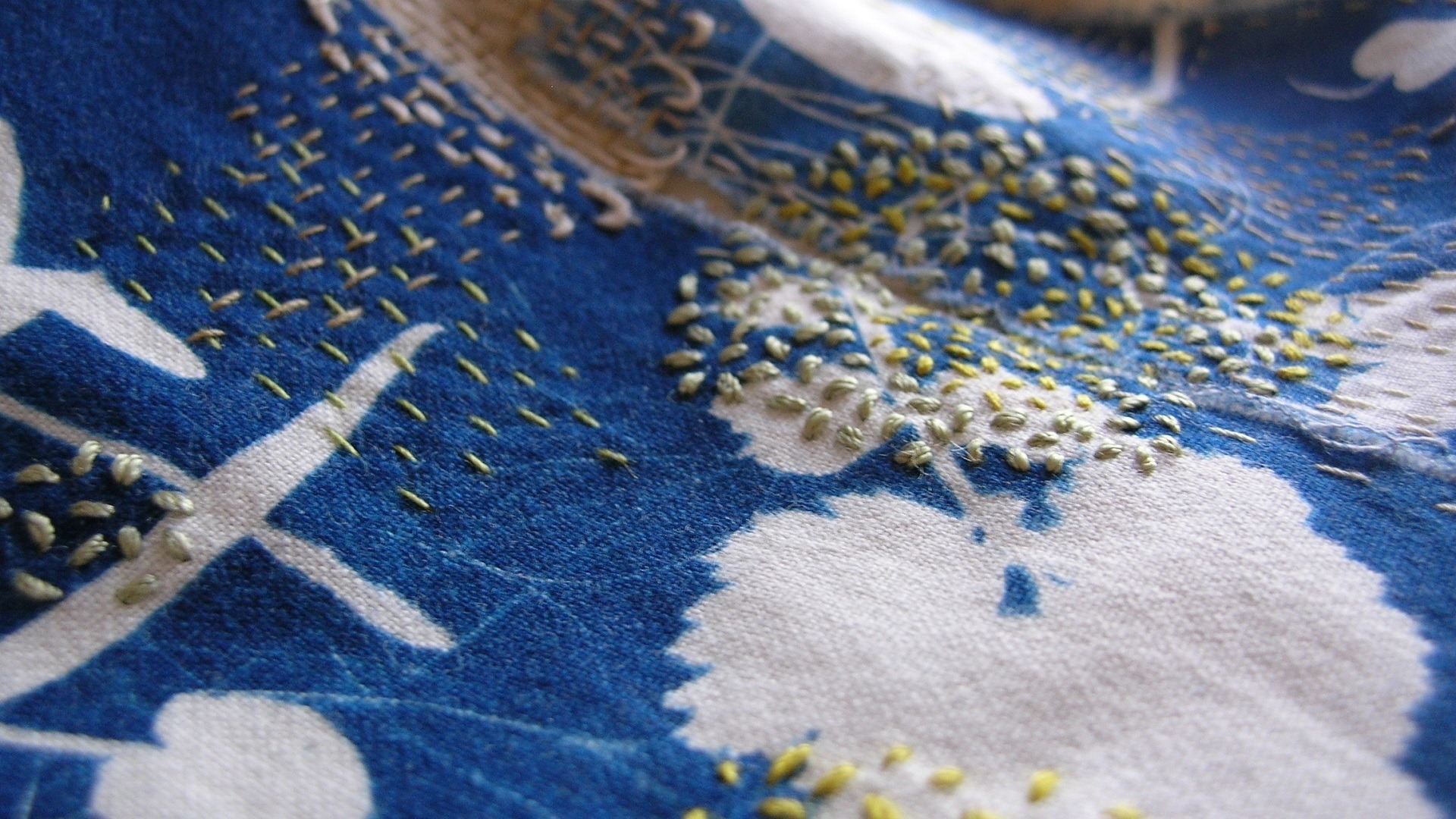
Cultivating an awareness of craft
I would not be the person I am without growing up in a household where paint brushes and pots of PVA glue lived permanently next to the kitchen sink and yoghurt pots were religiously hoarded because ‘they might come in handy’. In our house, the pincushion belonged on the coffee table, not hidden away in a work basket, and everyone knew which scissors were for paper and which ones were reserved for fabric.
I realise now that our family was unusual for making, repairing and recycling so many things at home. My brother and I were encouraged to have collections as hobbies and when my Grandparents saw a magazine article about antique buttons it started a lifelong collecting habit for me.
Visiting museums as a child and collecting buttons gave me a wonderful awareness of craft and material. We visited so many places where you could see how craftsmen and manufacturers used to make things; cotton and woollen mills, tanneries, coal mines, basket makers, blacksmiths, coopers, rope makers, dye gardens, silk ribbon weavers… I was fascinated by it all.
Once you start to look at objects and consider how they were made or why that material was used and where did it come from, it becomes fascinating and tells a much bigger picture.
Another key influence on my practice was an awareness of the natural world. Despite not being outdoorsy as a child, I always loved wildflowers, trees and birds. My mother and grandmother taught me the names of garden plants, wildflowers and birds and I learned more from books.
When I was a teenager, I used to walk through the fields and beech woods: looking, exploring and gathering. It was a way for me to find out where I was from.
Now I use walking a great deal as a means of observing, collecting and experiencing – this is my ‘visual research’.
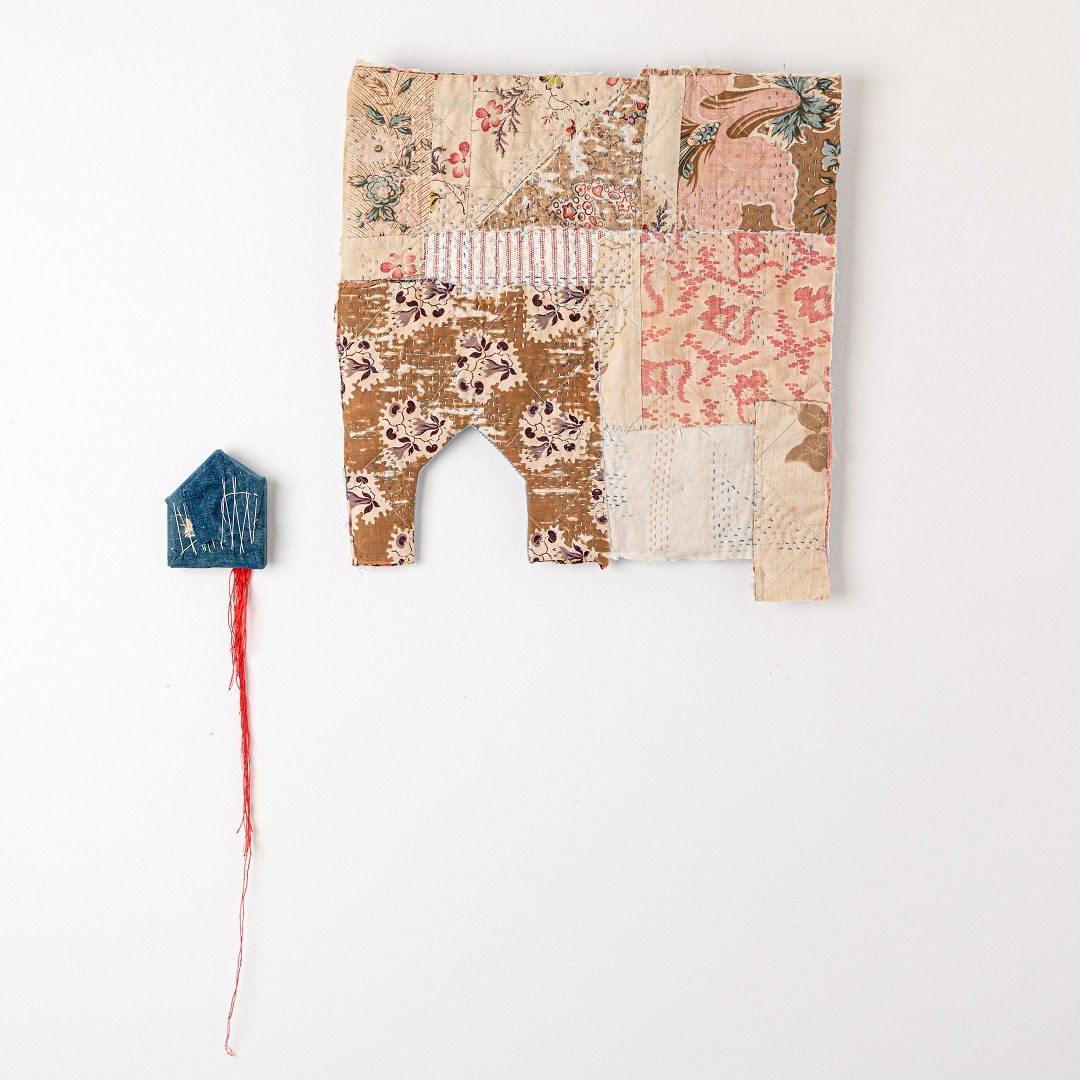
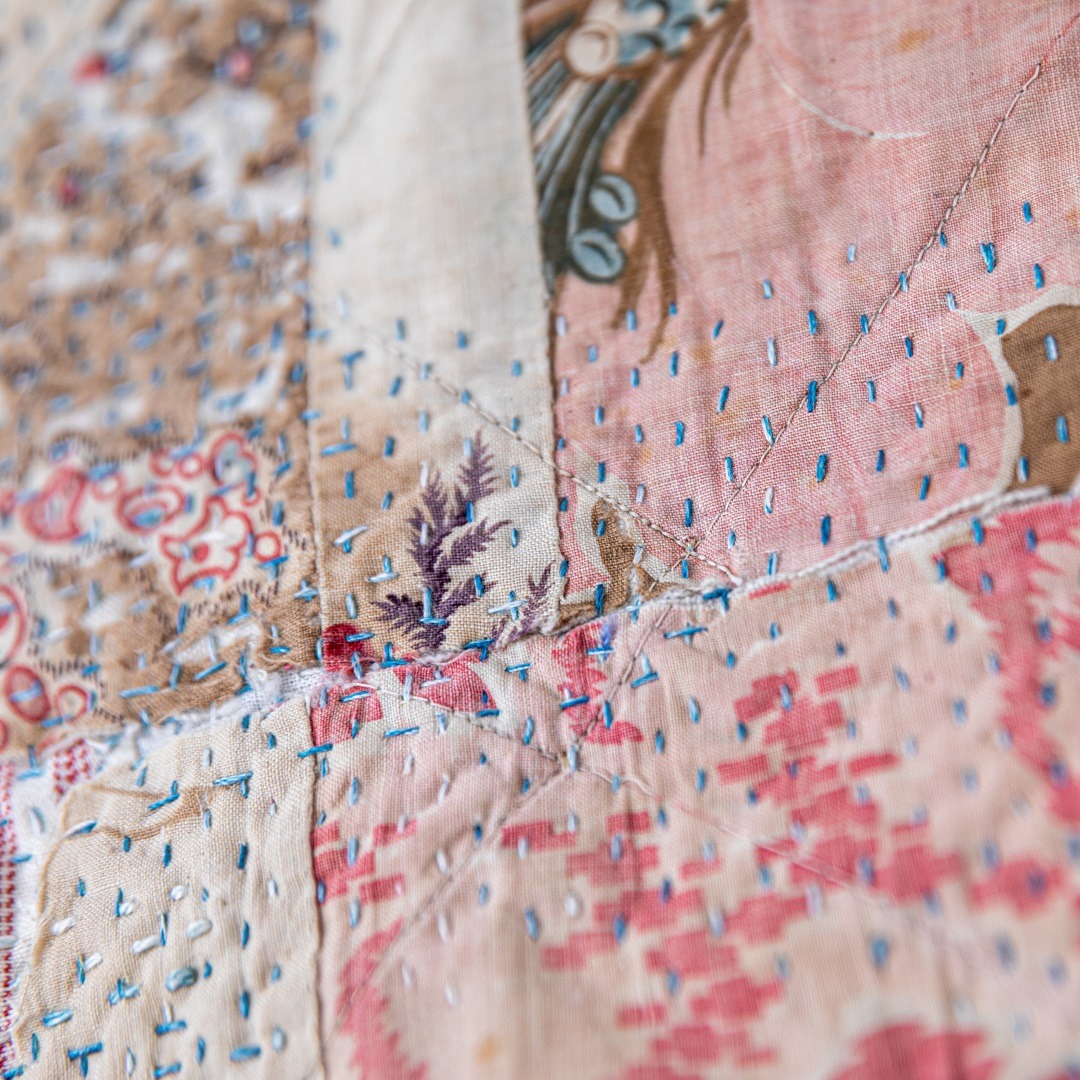
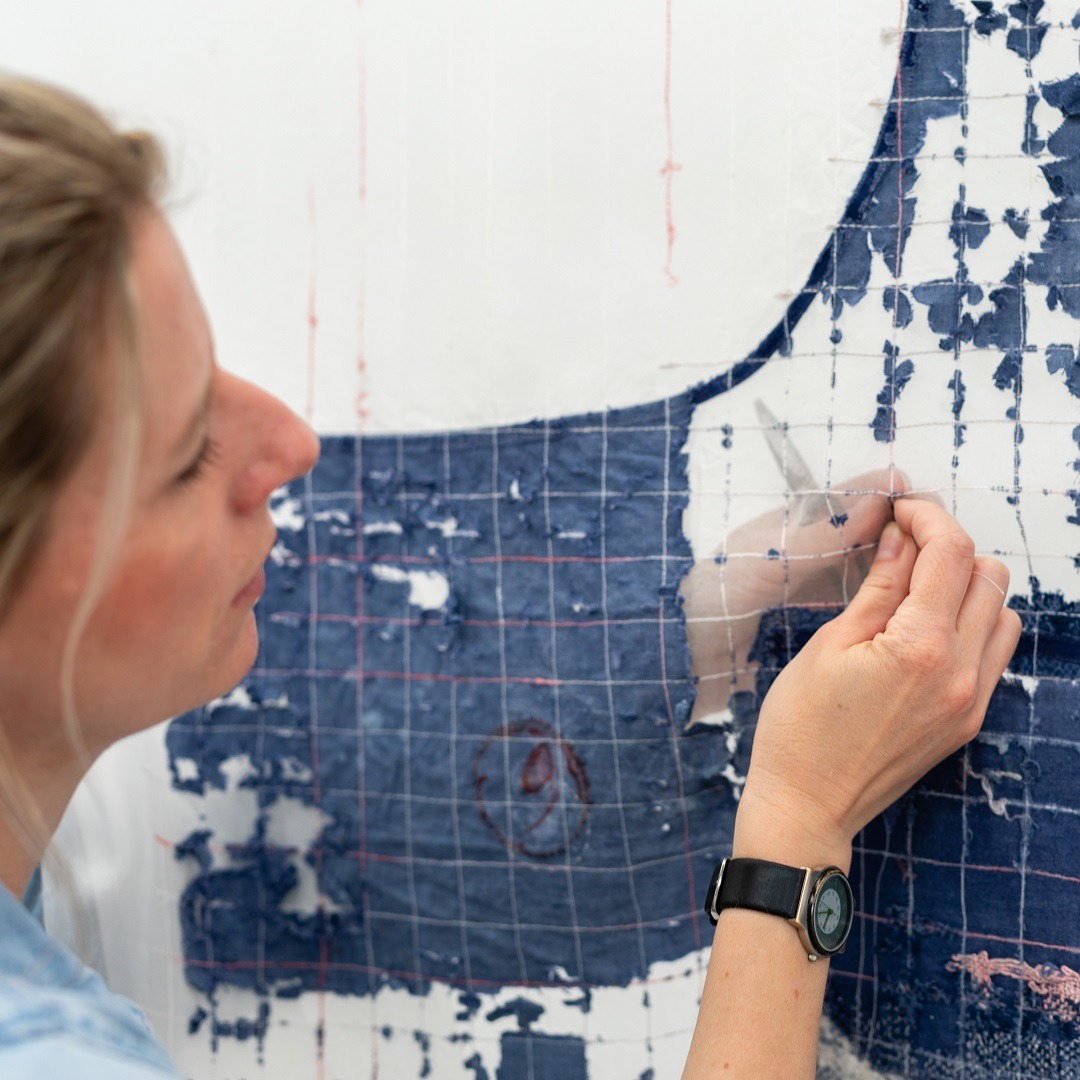
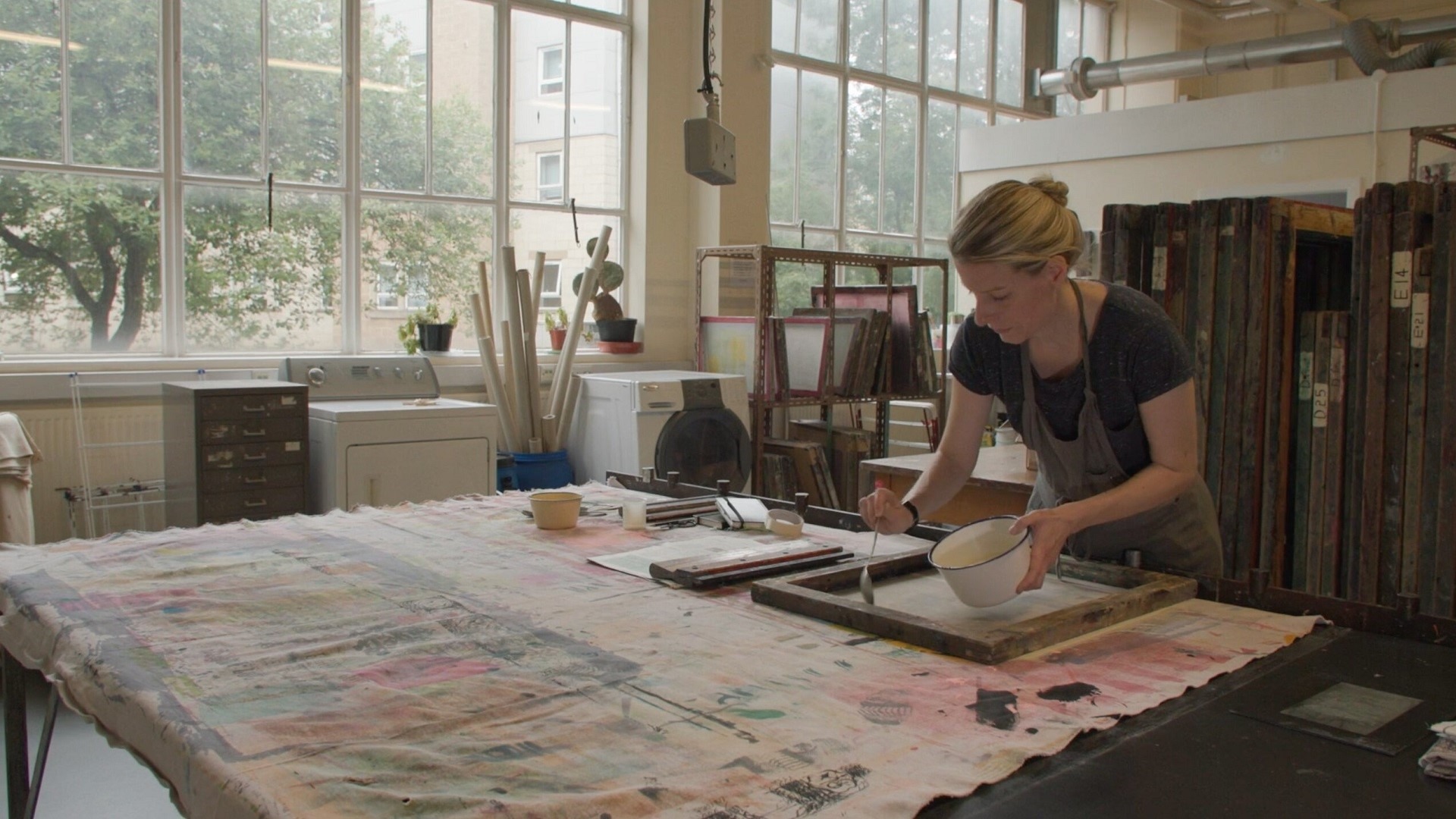
Discovering textile art
No one in my family was an artist or considered themselves to be ‘arty’. I went to a secondary school with a great art department. My art teacher was a great influence on me through her teaching of drawing and textile-related projects.
I don’t really remember one key moment when I became aware of textile art, just a gradual awakening to this world of textile that spans design, art, history, domestic craft and culture. ‘Textile art’ is perhaps a part of that but I prefer to see connections between all aspects of textile.
After school, I chose to study for a Foundation in Art & Design at what is now Buckinghamshire University. I knew I wanted to study art textiles by this point and was determined to work in the fine art department rather than with the fashion and textile design students.
I did a BA (Hons.) Embroidery at Manchester Metropolitan University (MMU) and found myself on the perfect course. However, looking back I realise that after I graduated from university, I was drifting from my sense of self and distracted by the directions and demands of others. I was also exploring lots of new ideas and what I could do.
I started working more as a ‘designer maker’ making one-off pieces of textile jewellery, collages and bags using vintage materials that have been copied a lot since. I also experimented with designing screen-printed domestic textiles, which was fun but I realise now, not really me.
I now know that there are lots of different things that I could do but that doesn’t mean that I need to.
After leaving MMU I started exhibiting and selling my work and went on to do a MA in Textiles which was an opportunity to refresh my practice and return to the ideas that really matter to me.
I made a big change to the way I work when I did my MA. I was determined to get back to something that was really me, rather than making work that I thought people would want to buy. This shift in thinking has been wonderful but a big challenge. Oddly I find it much harder being myself but it is ultimately more satisfying emotionally.
I’ve been a lecturer at Bradford School of Art since 2004 and I am now the Programme Leader for the Foundation Degree in Textiles Practice at Bradford College. I work from my home studio; a lovely light-filled building opposite my house. Sometimes I also make use of the workshop facilities at Bradford College.
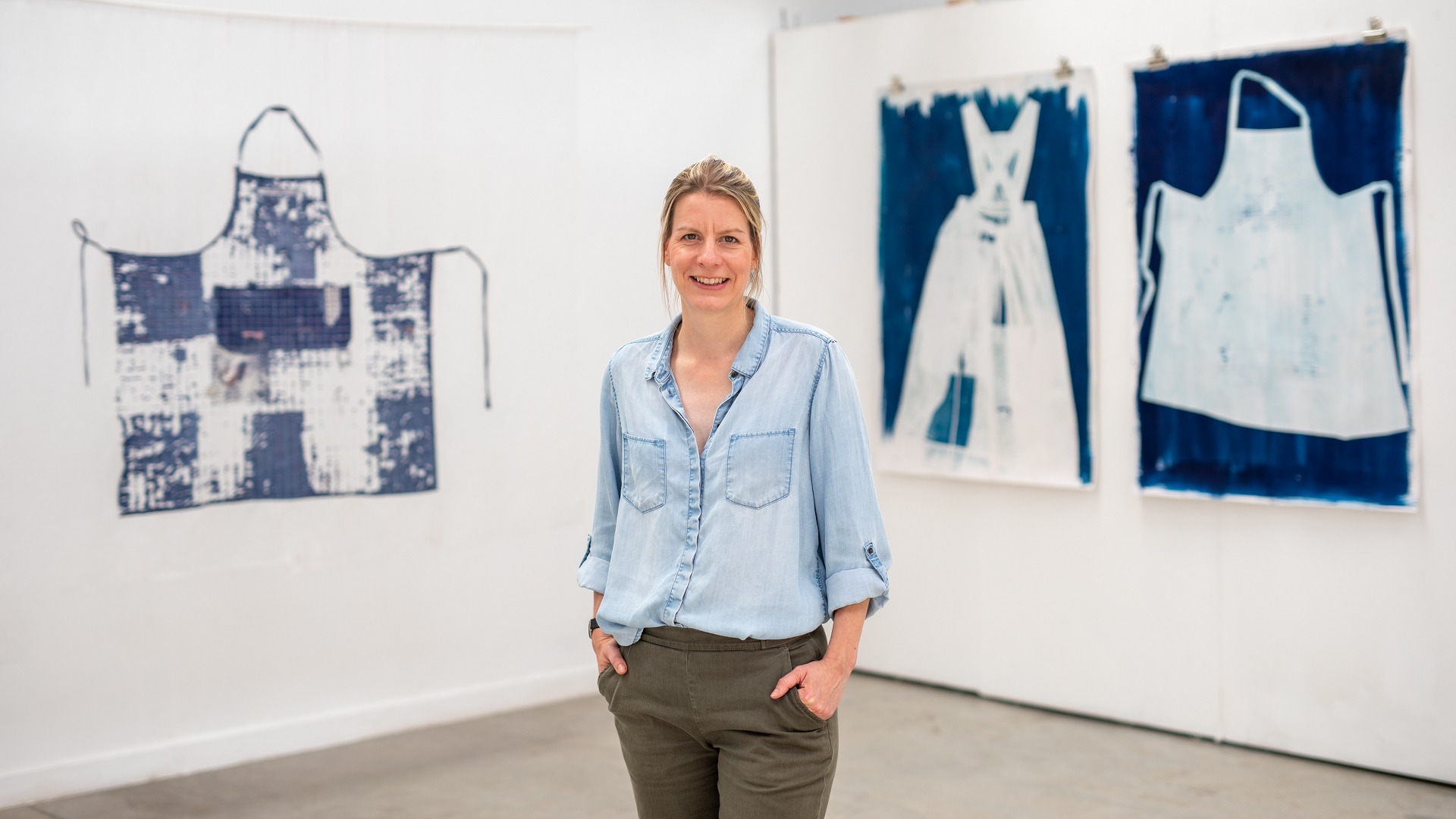
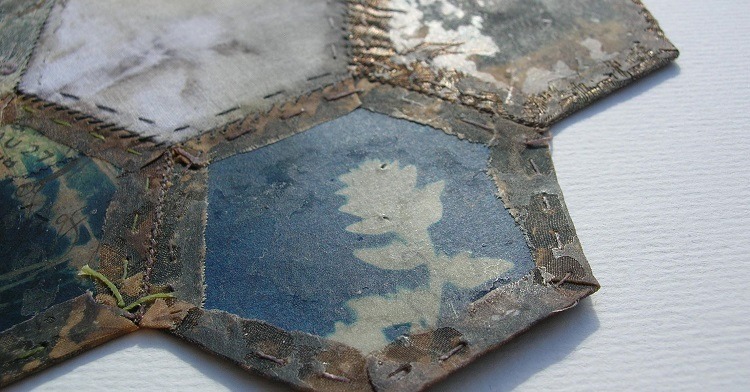
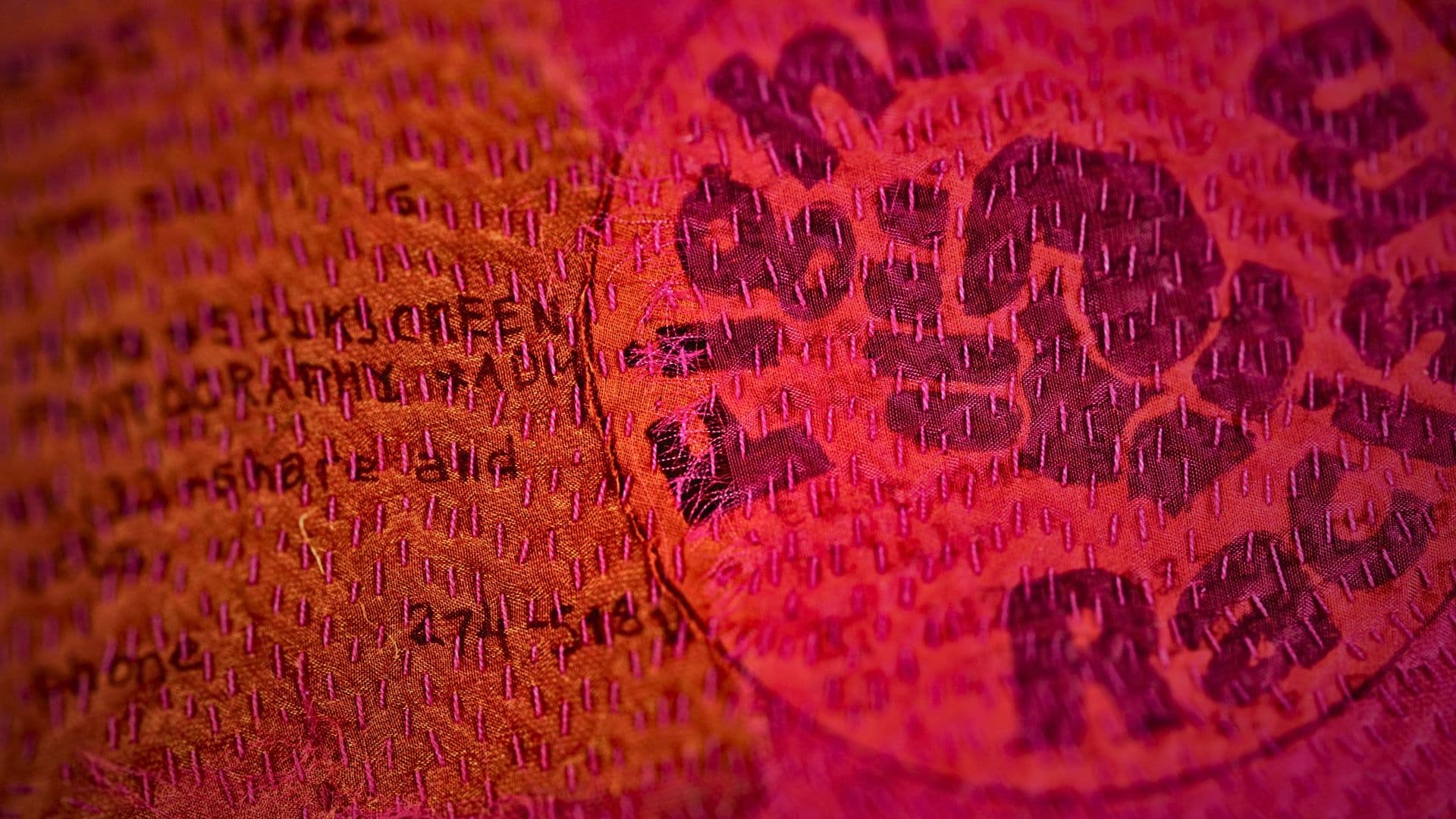
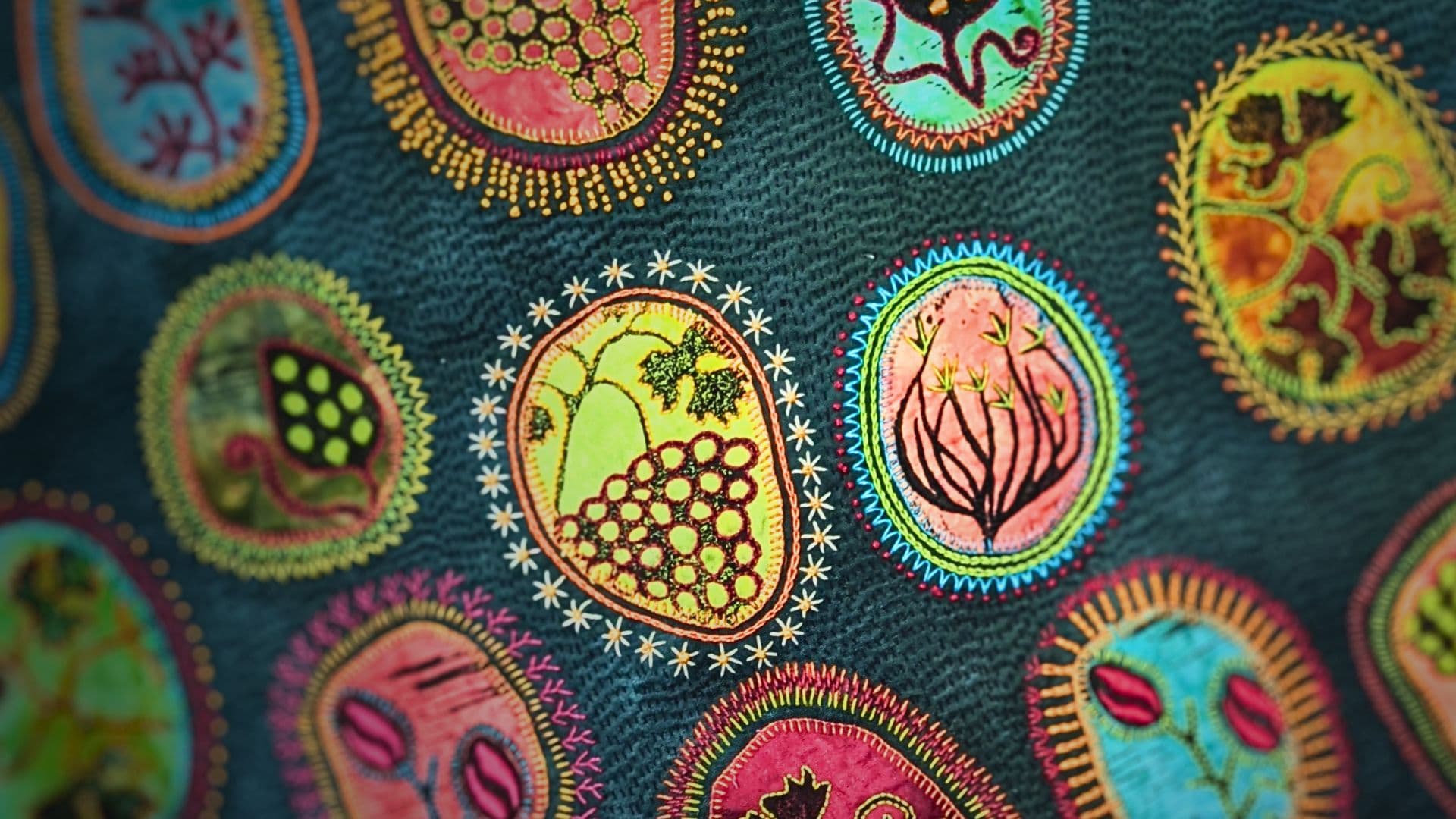
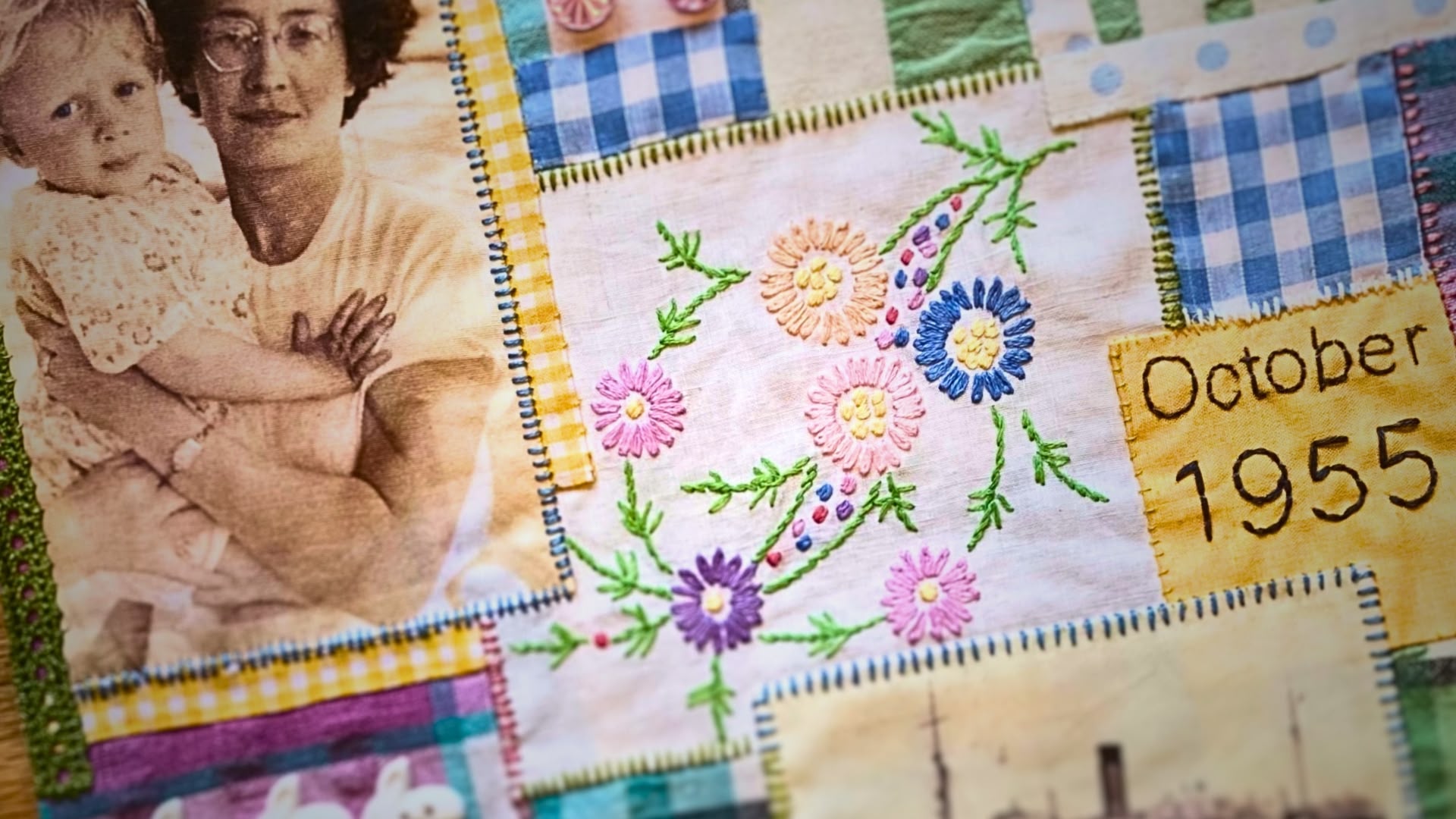
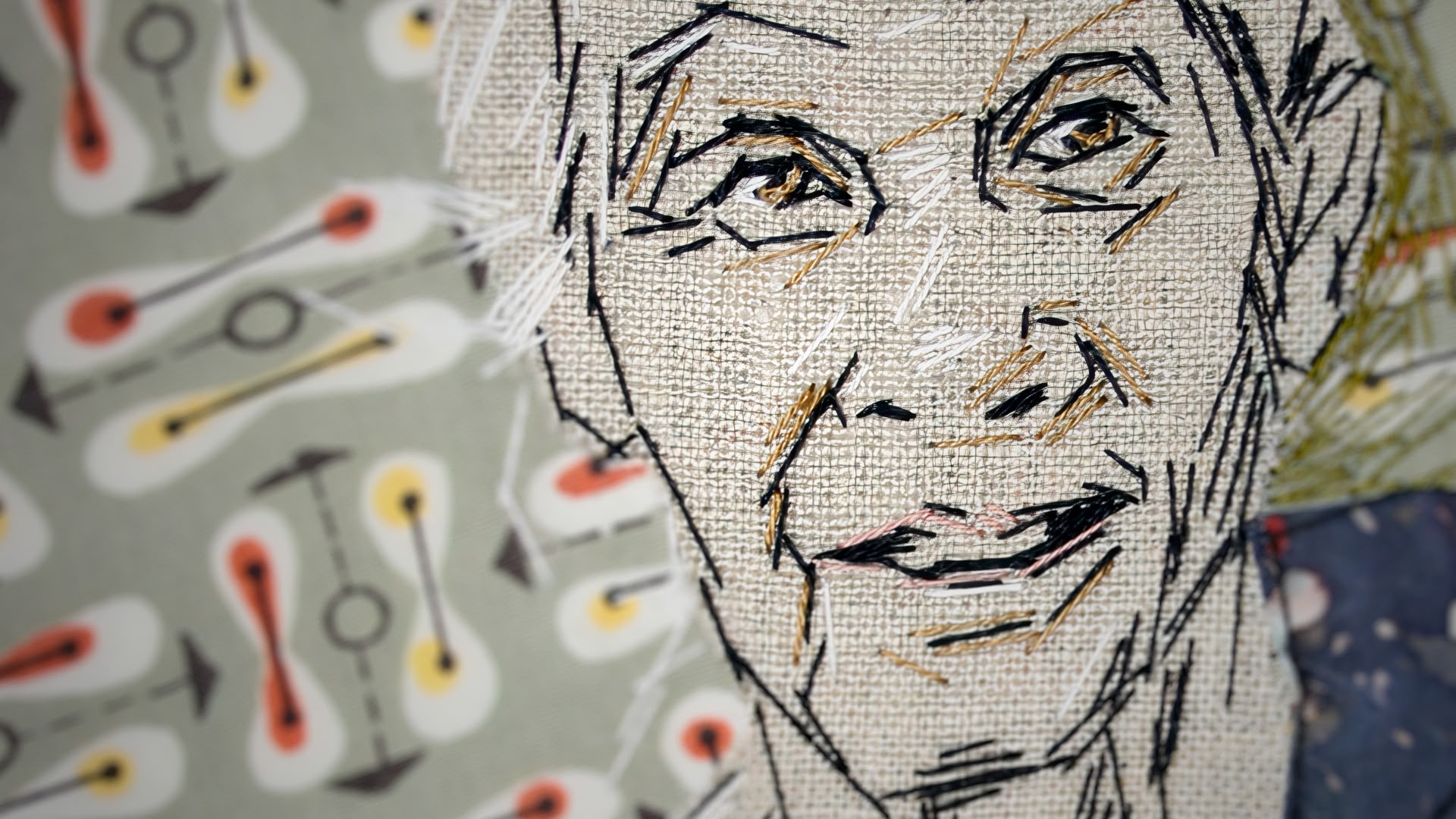
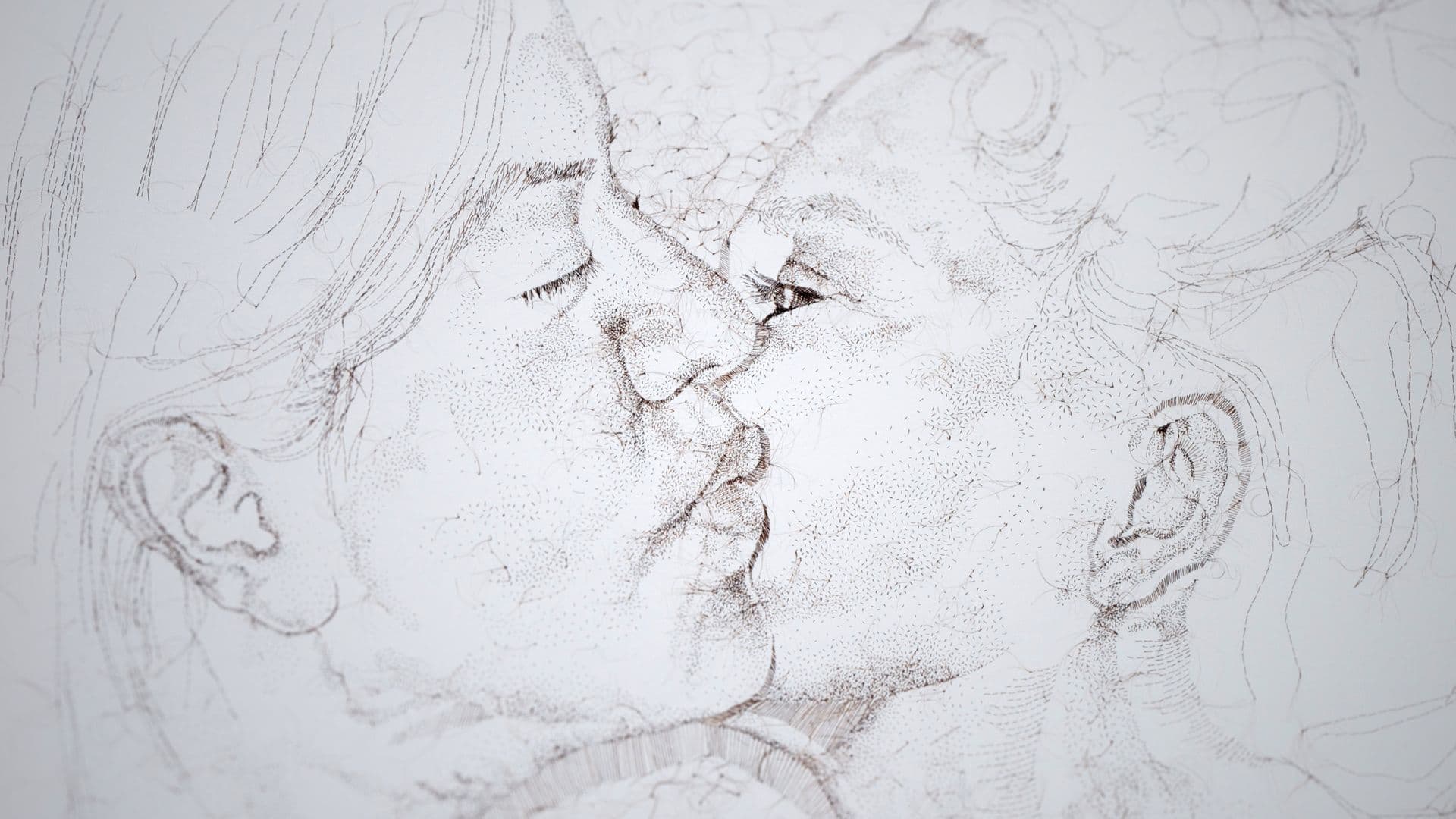
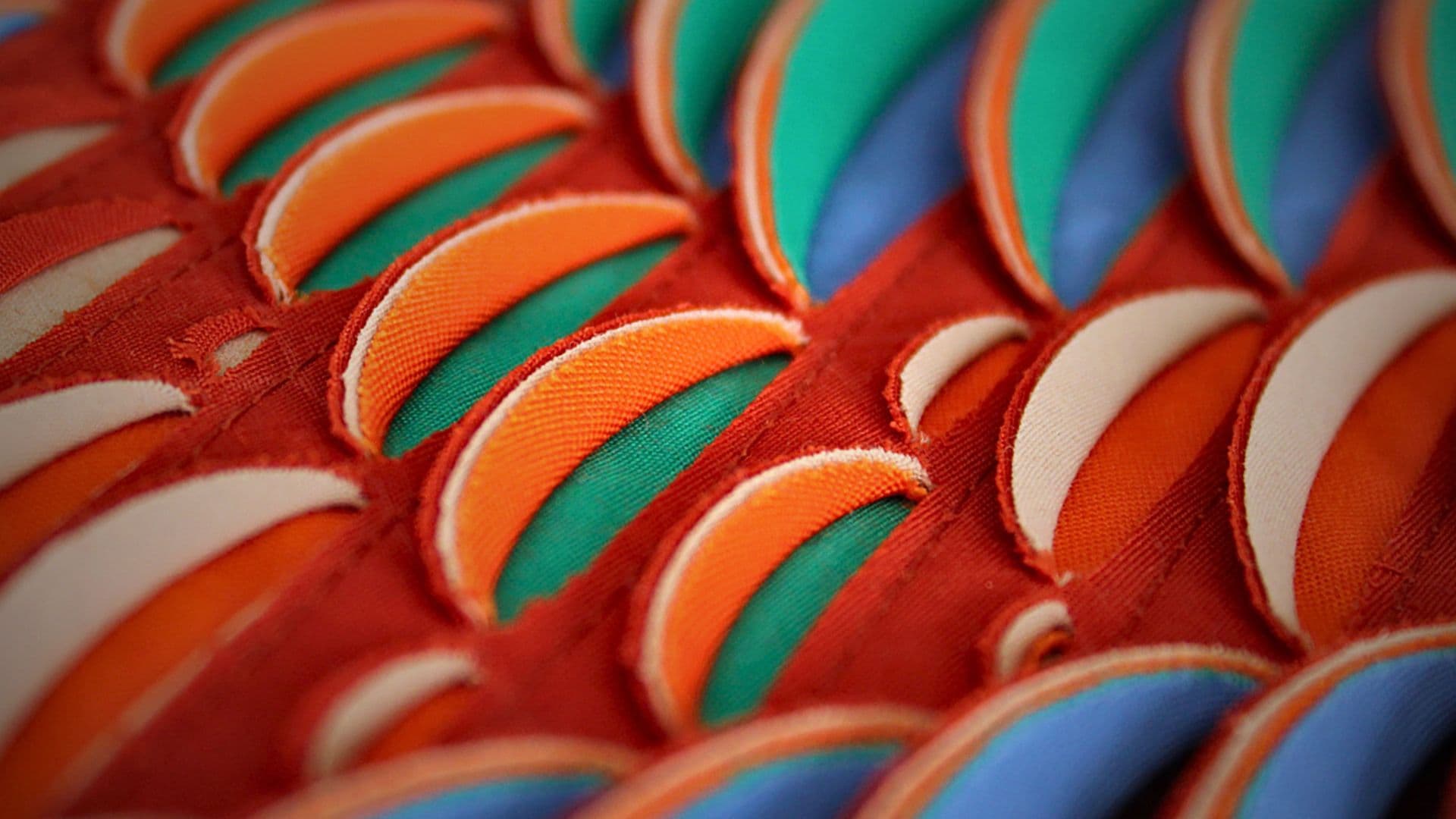

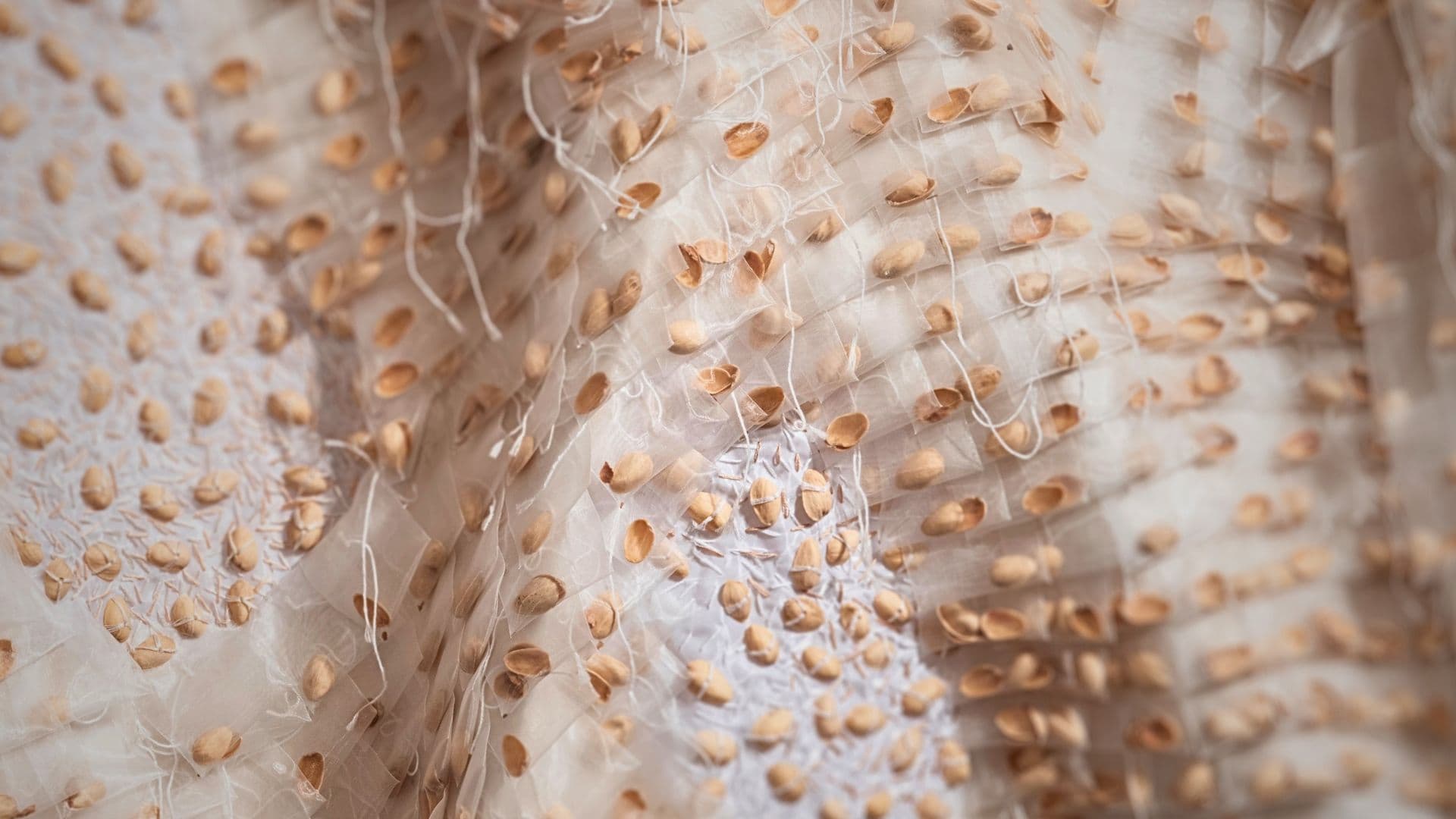
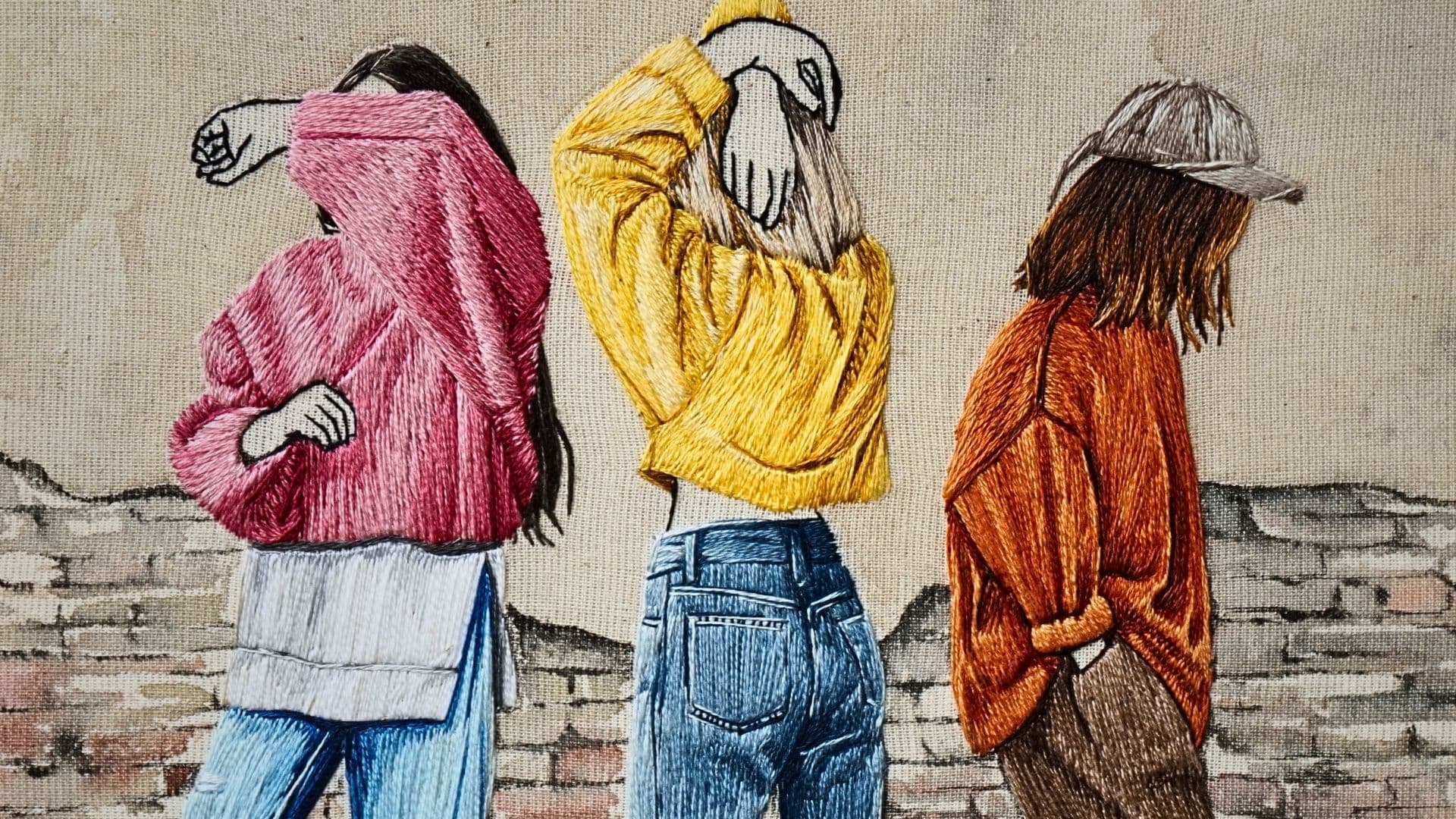
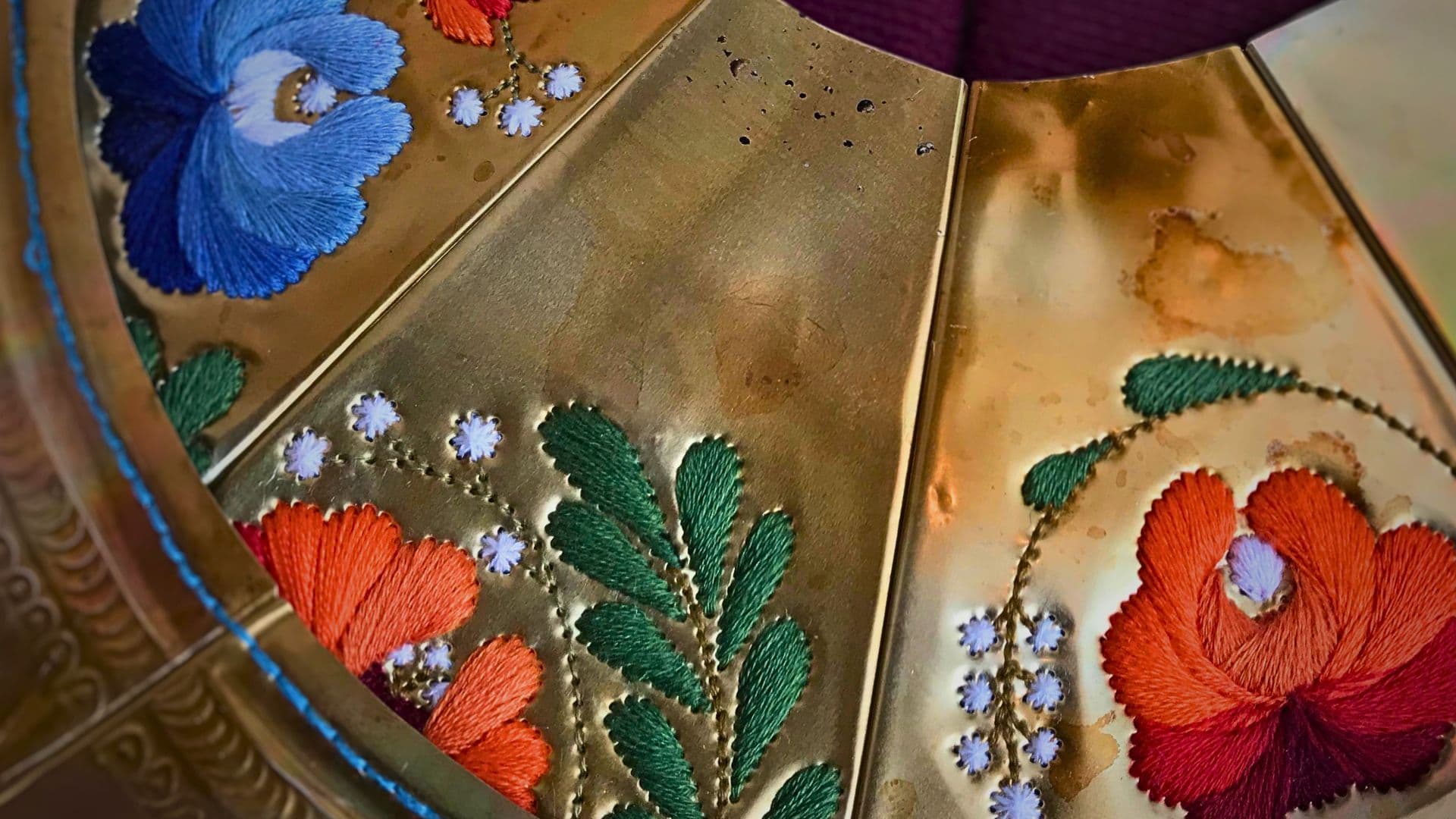
1 comment
Christine Davson-Galle
Wonderful to read about your journey and witness some of your remarkable work. I am a recent addict to botanical printing. I have a huge now a-days, untidy garden and I live in the country. I love working on old blankets and silk. Making cloaks and ponchos and scarves. And paper. Hence your story and ideas and works have touched my way of thinking but lack the inspiration that you have. Keep up your practice and ideas. Keep well and keep taking risks. Namaste Christine